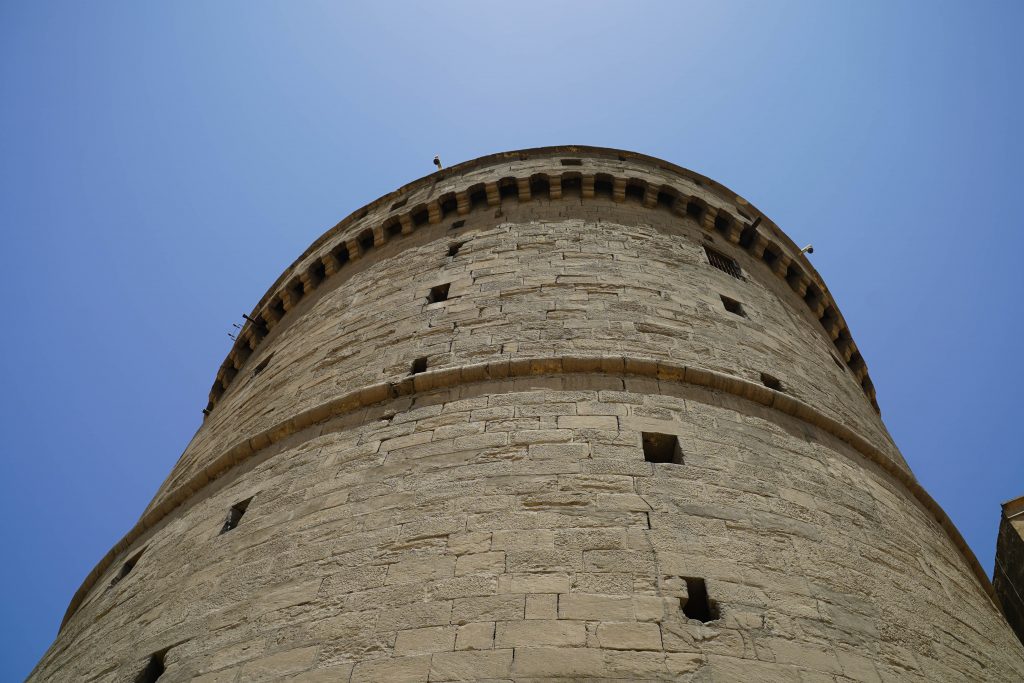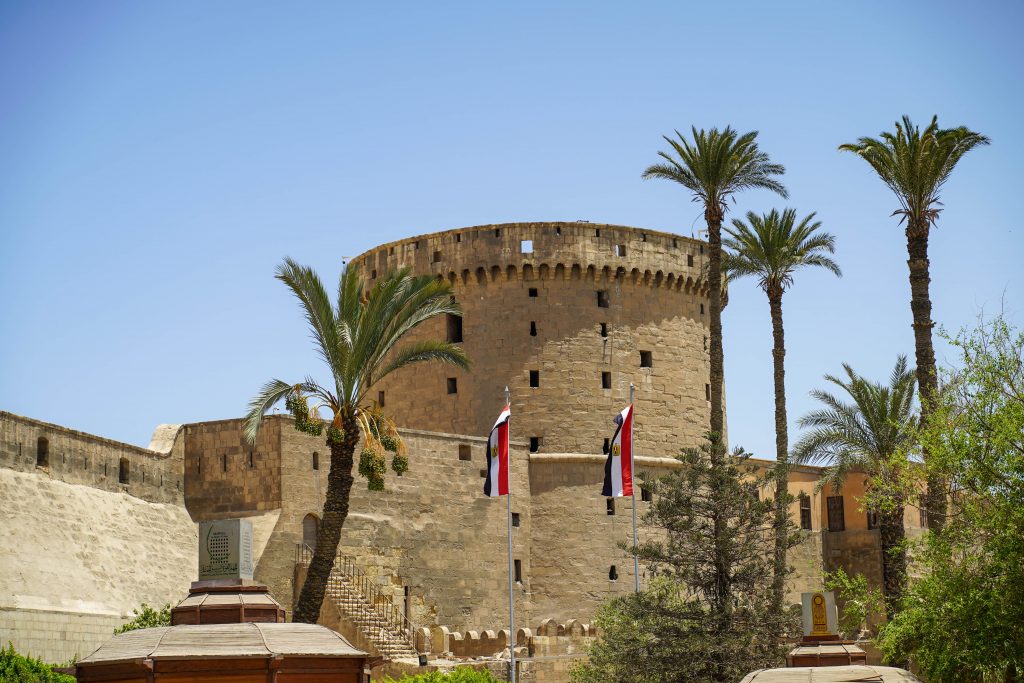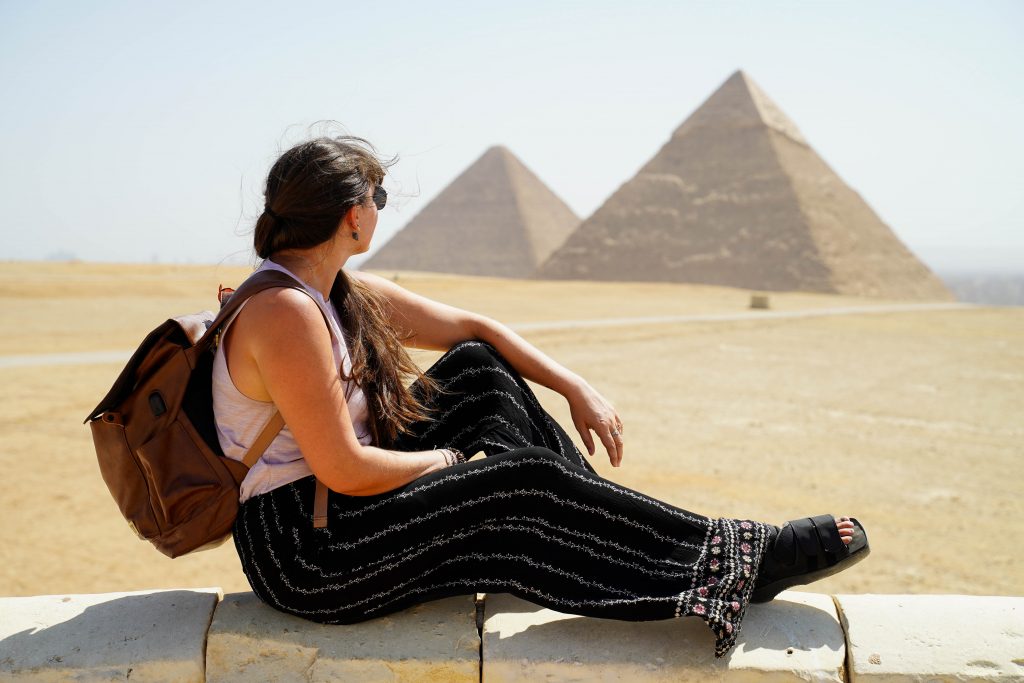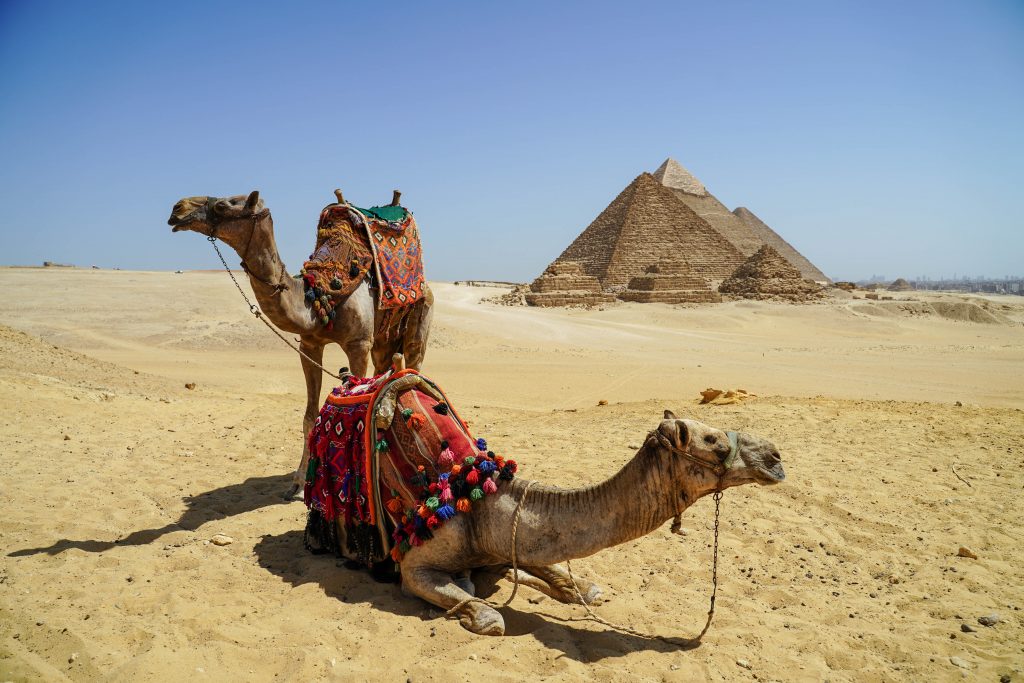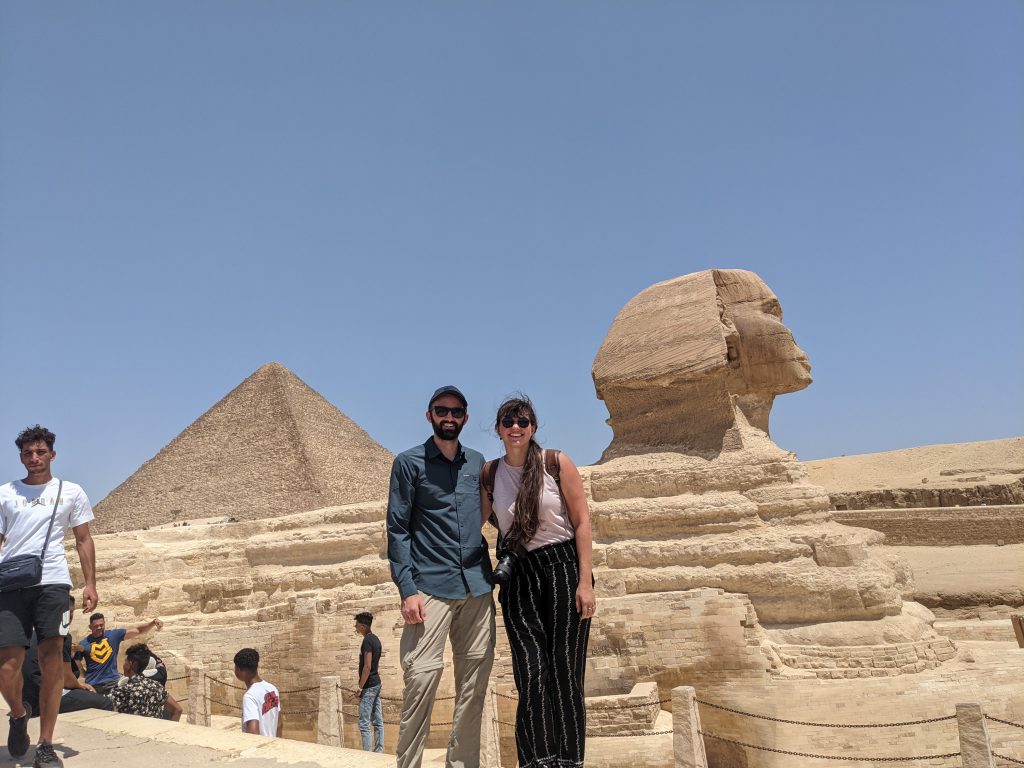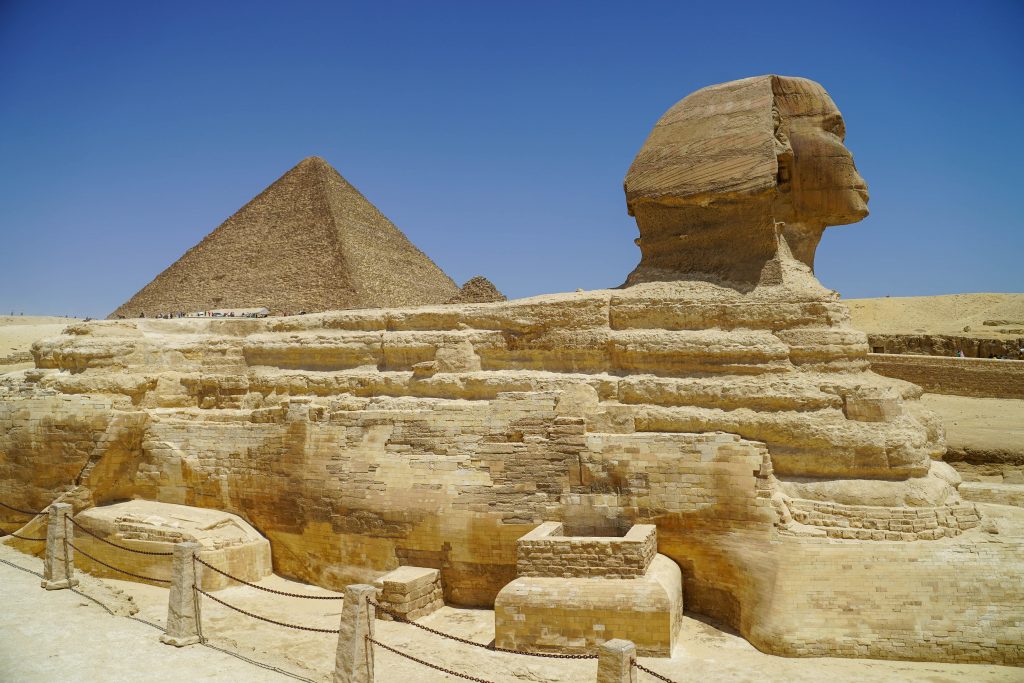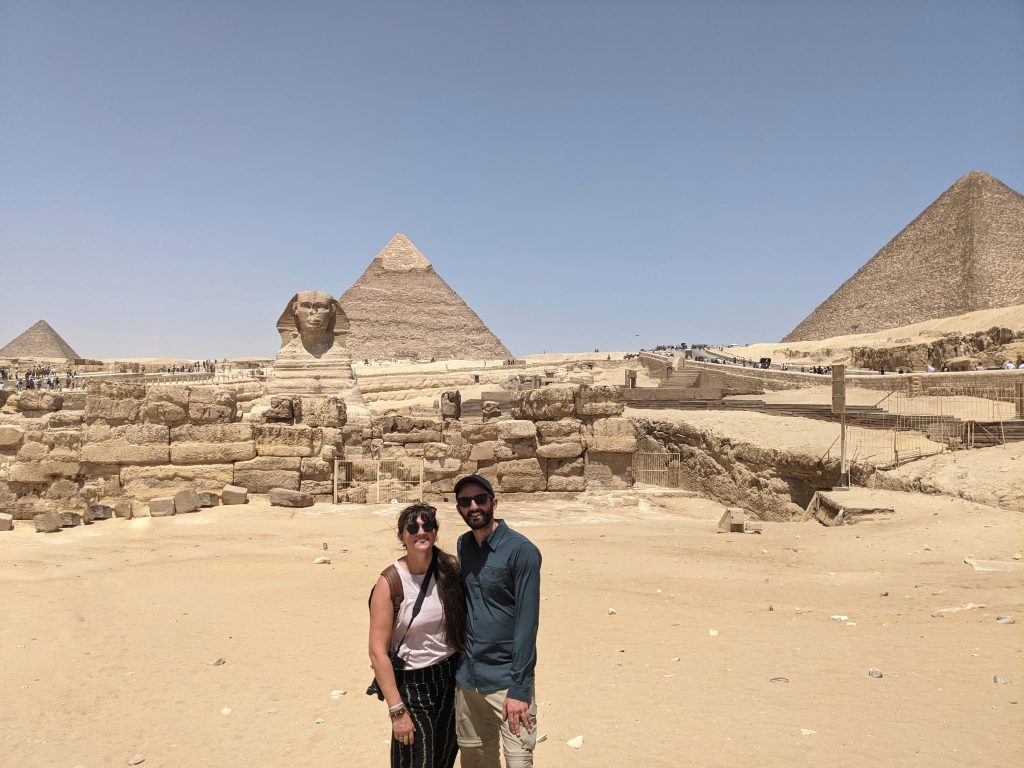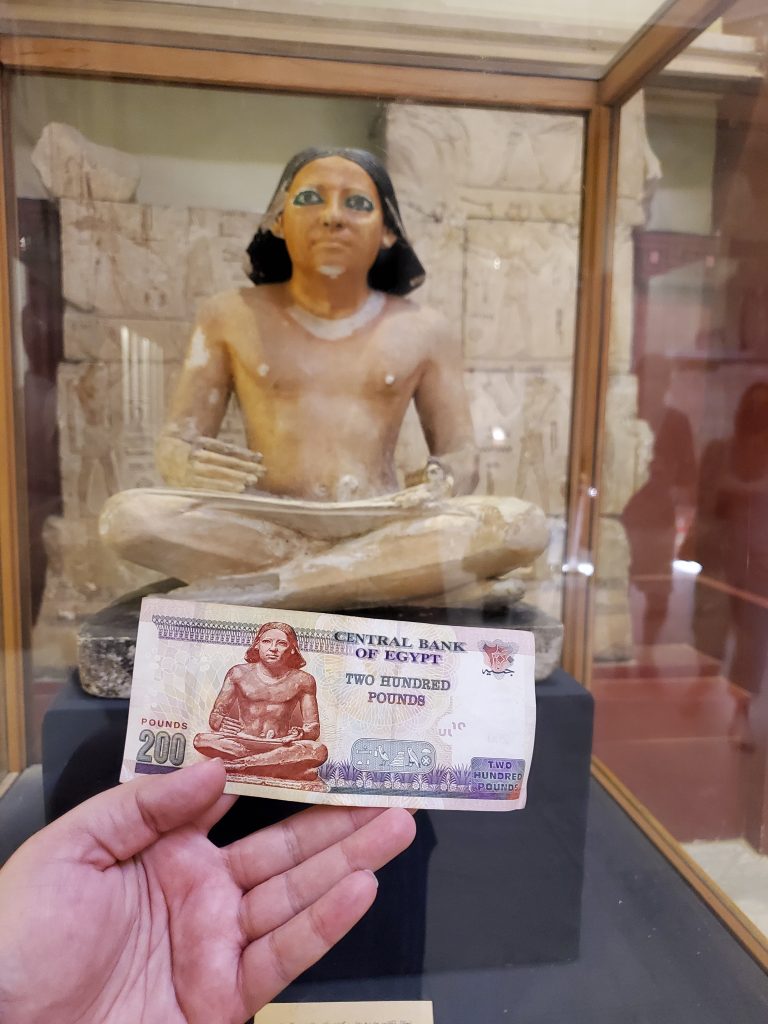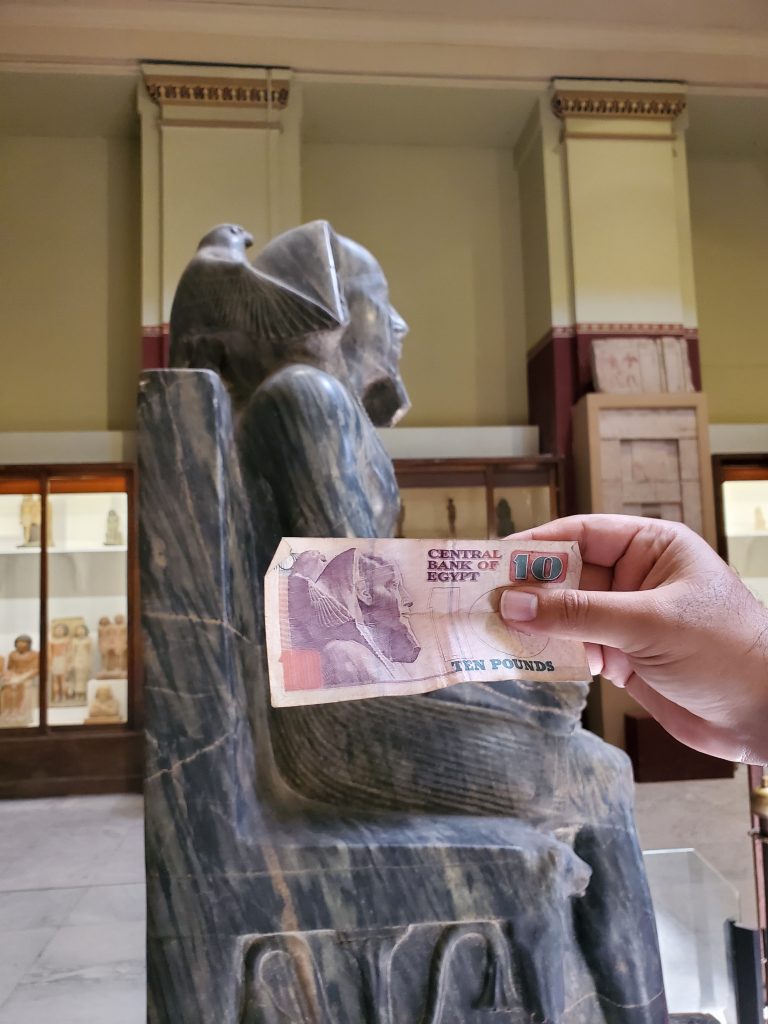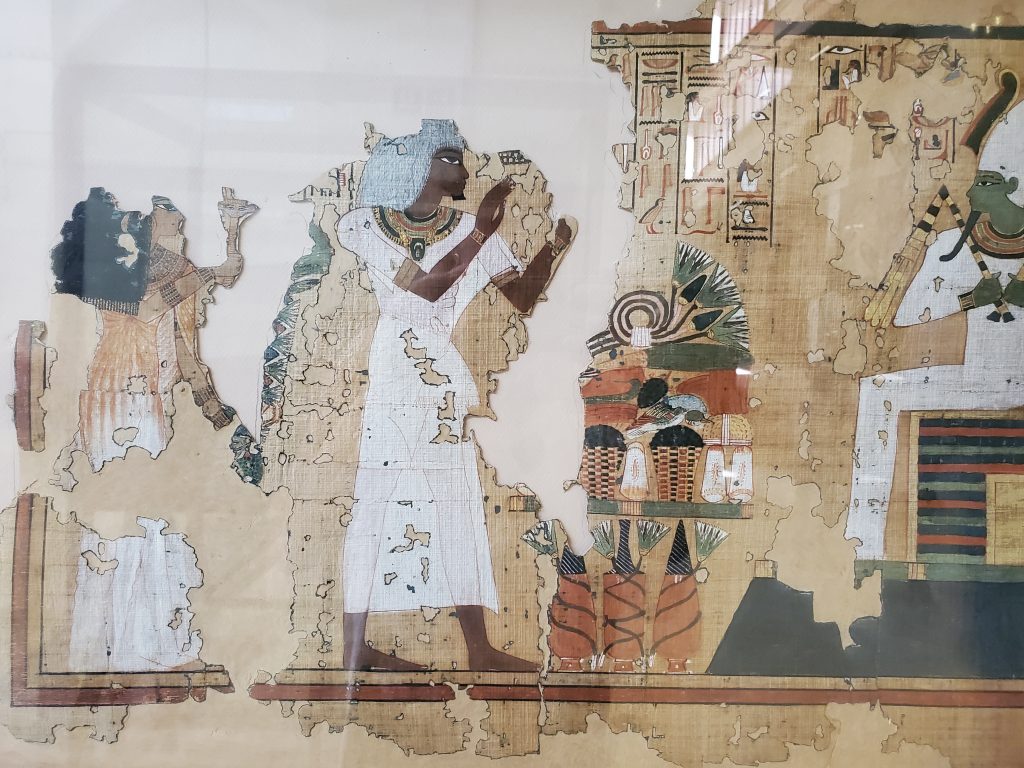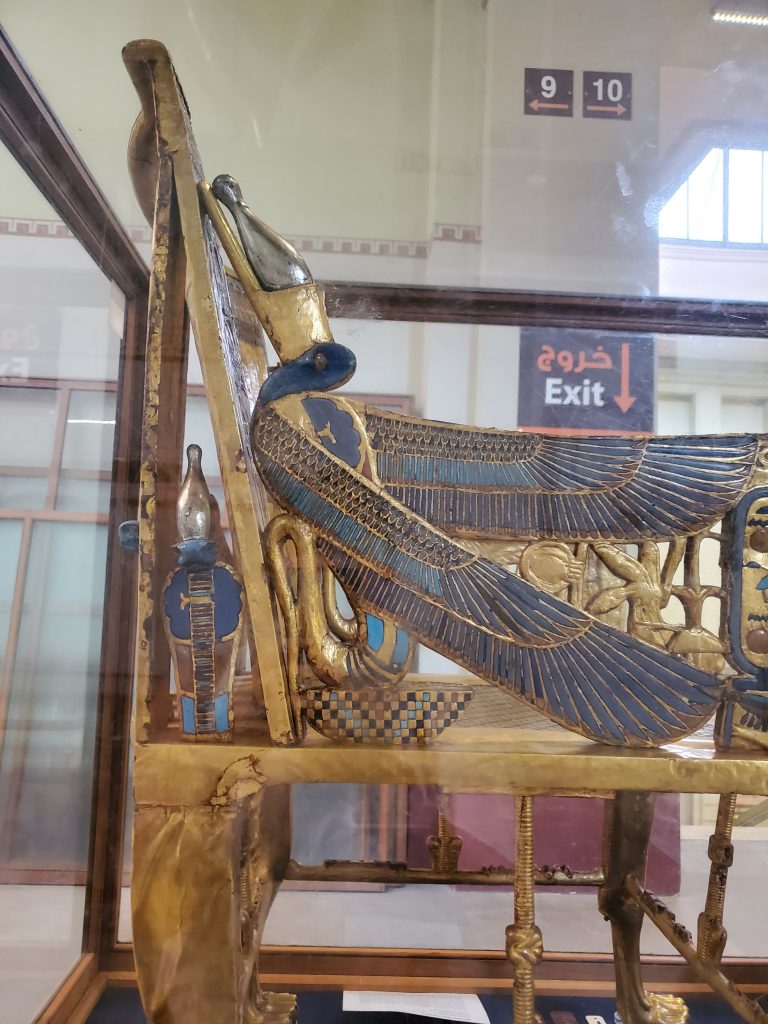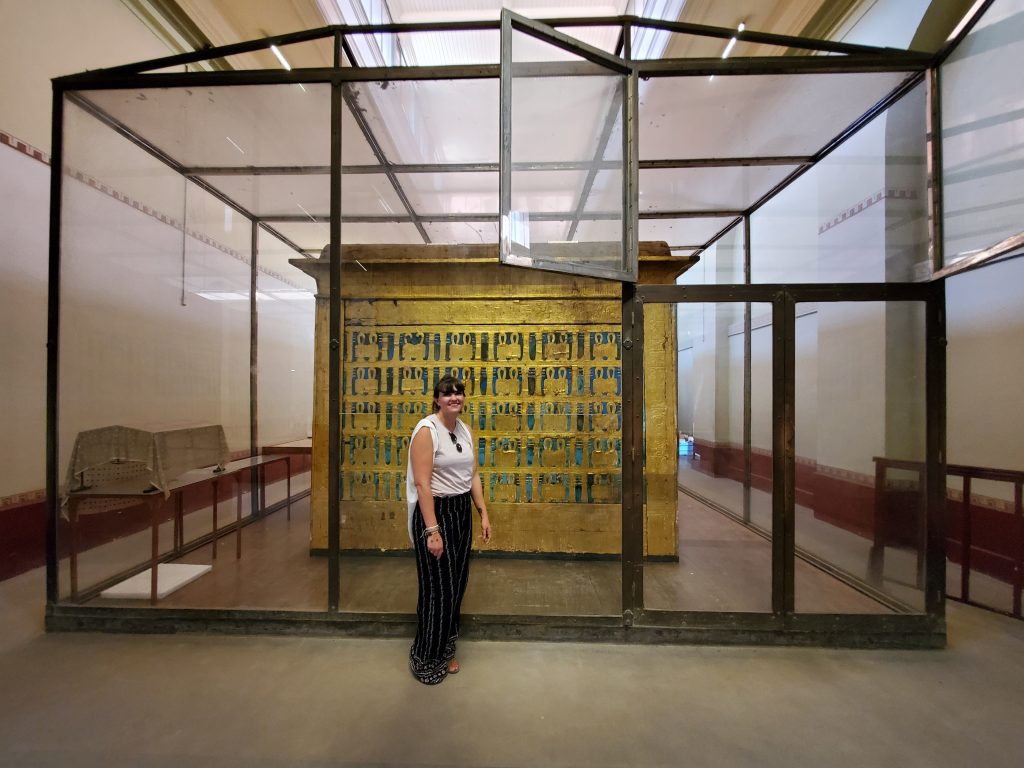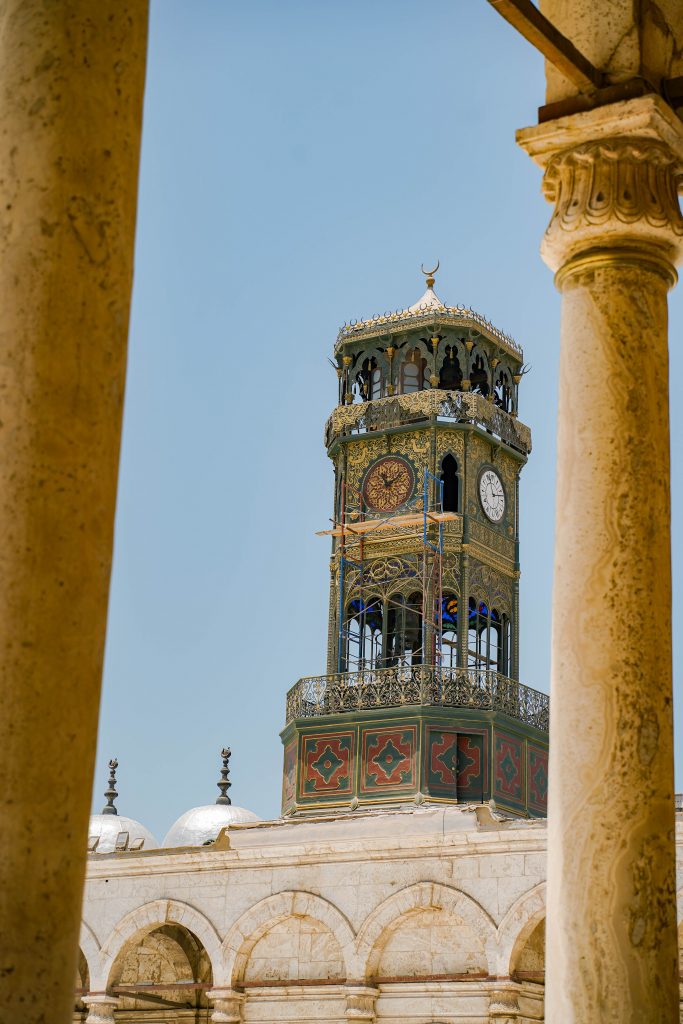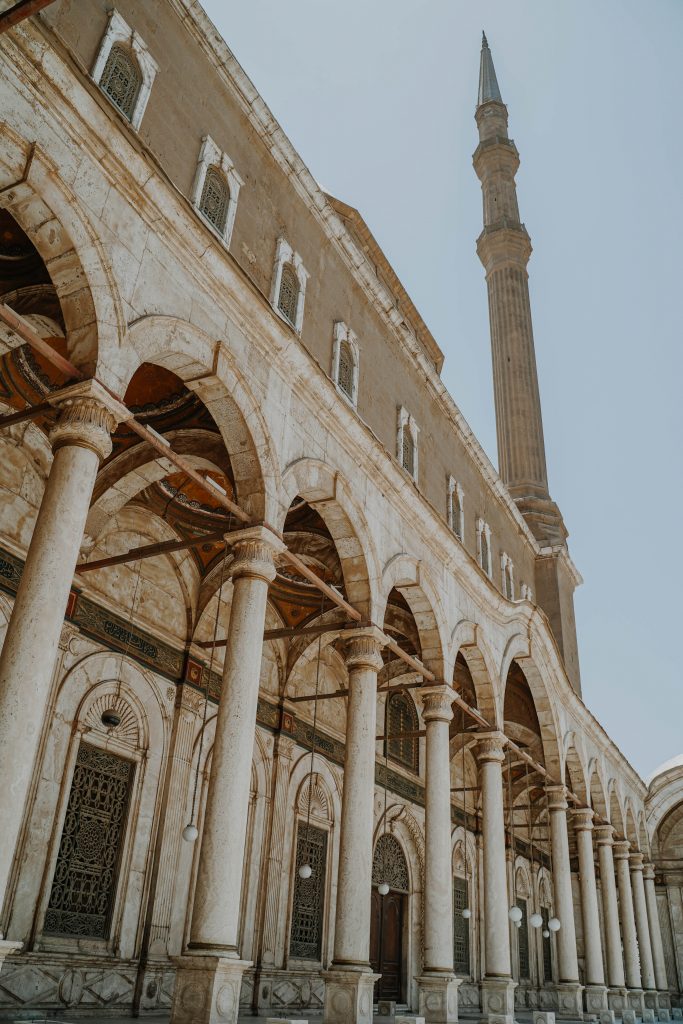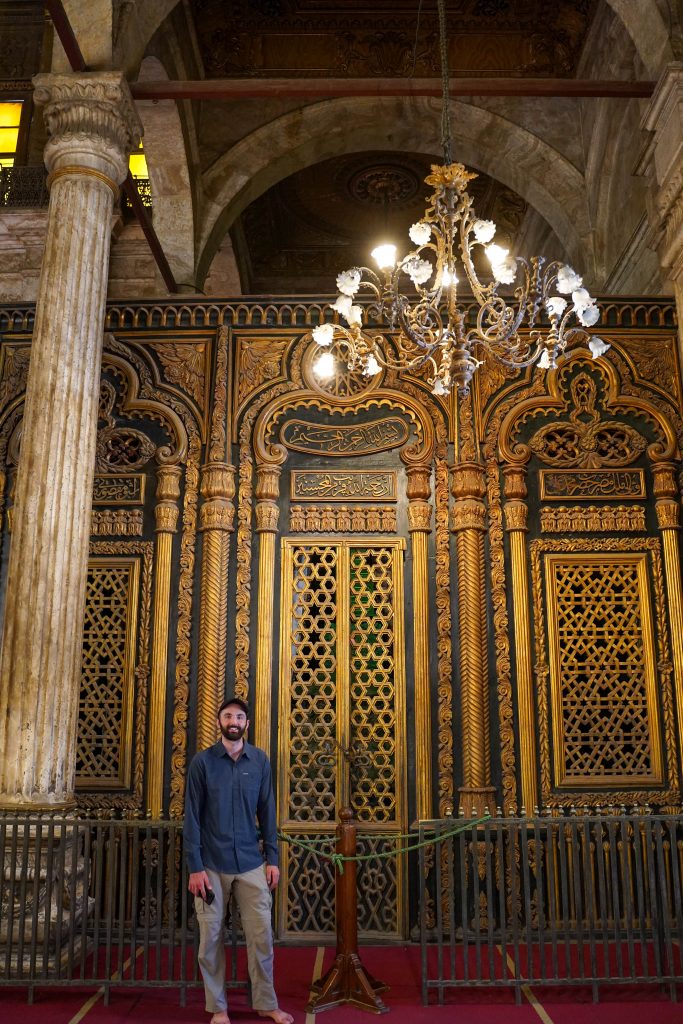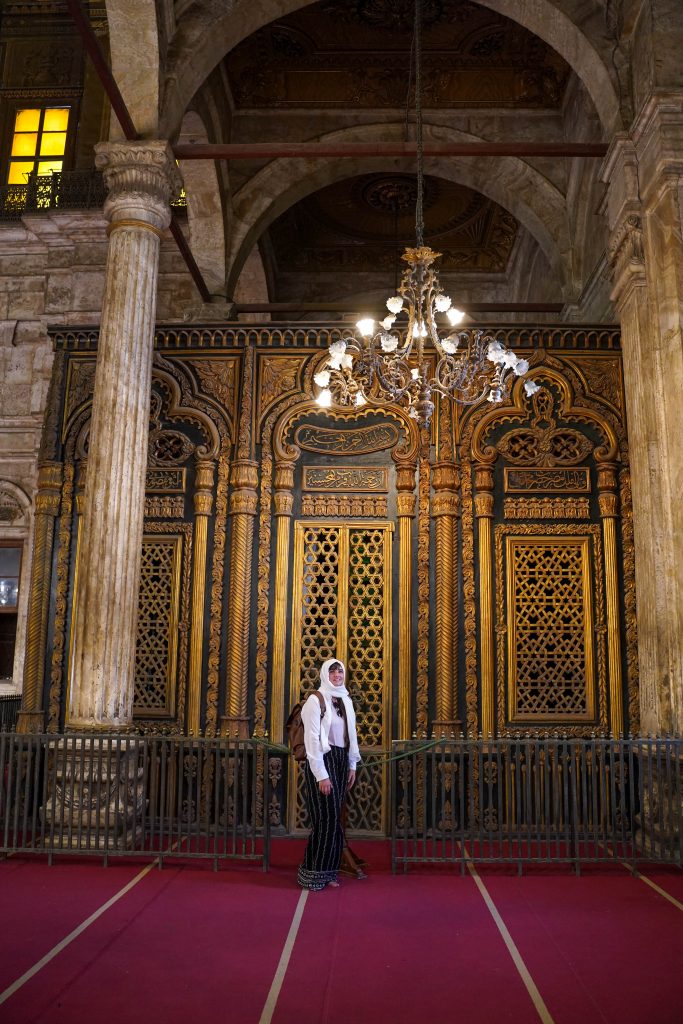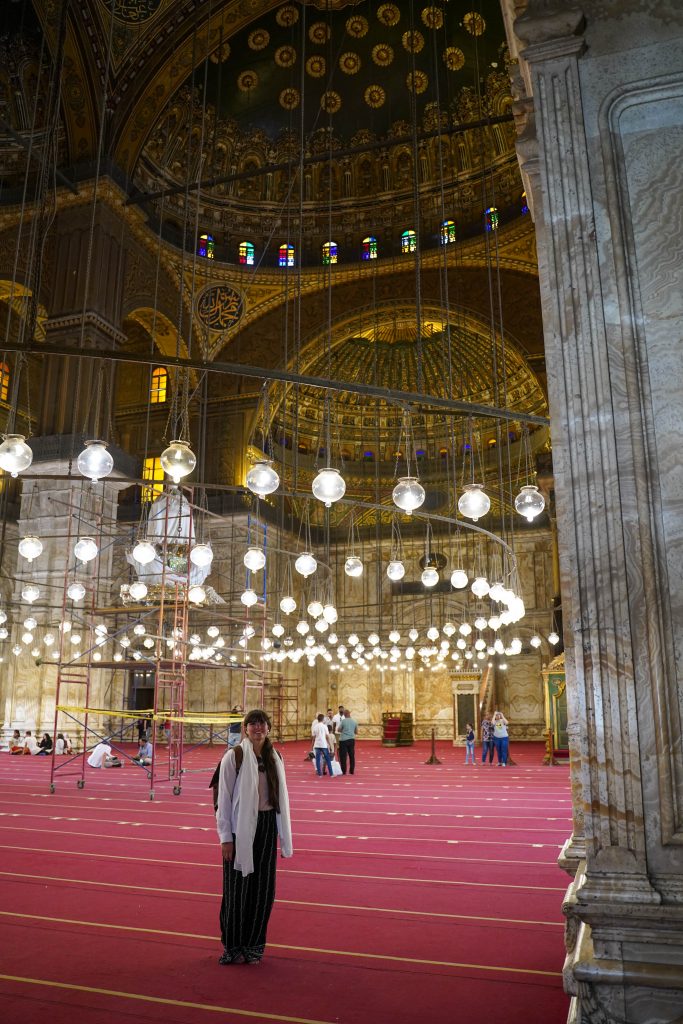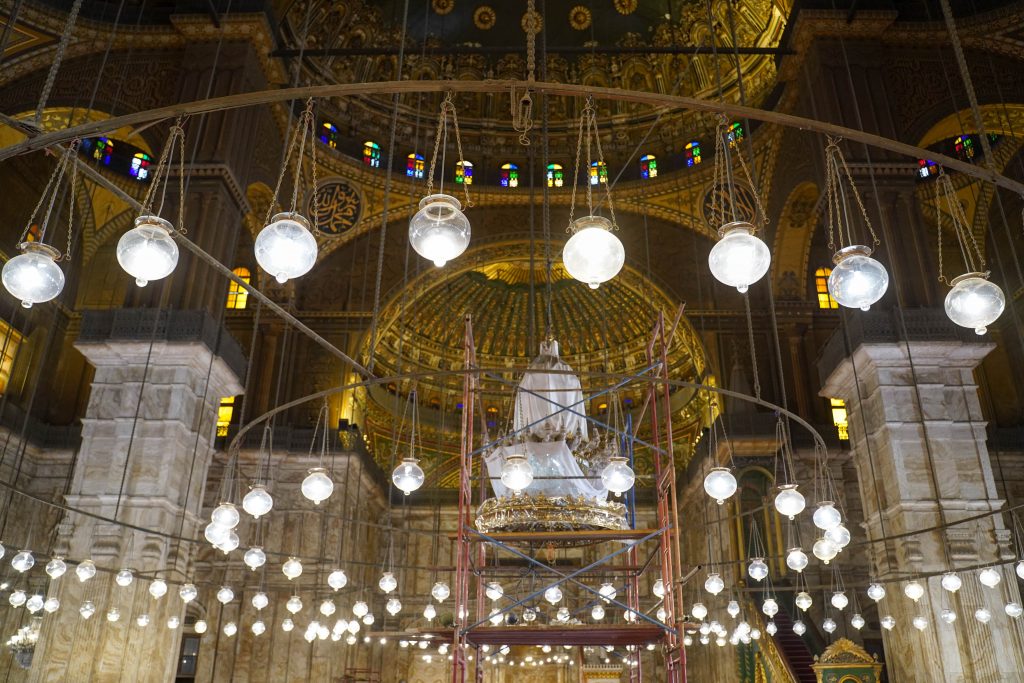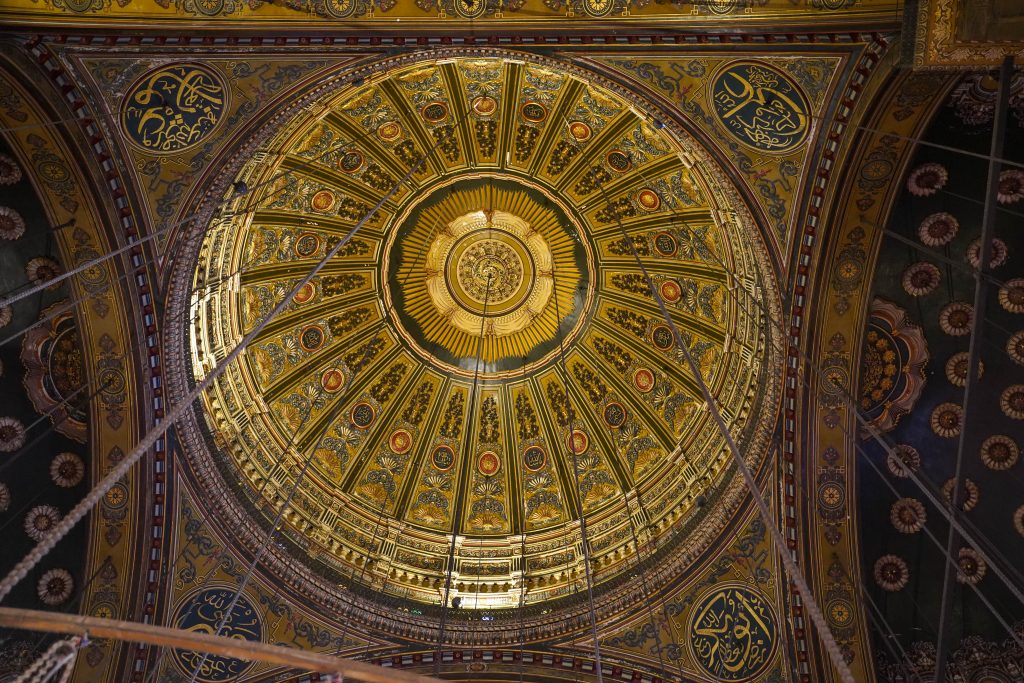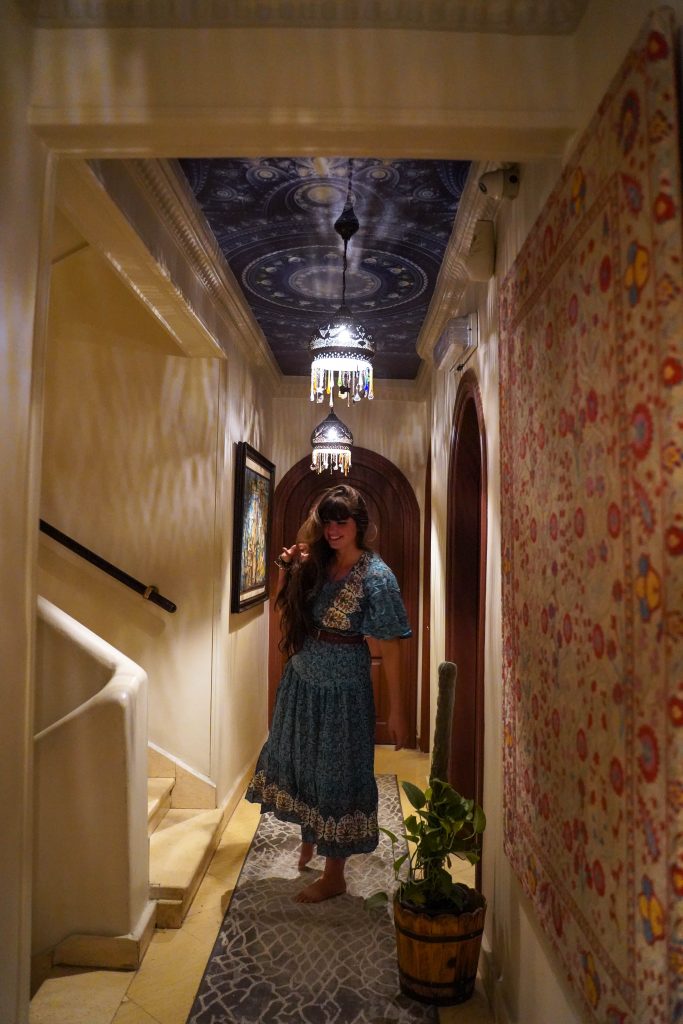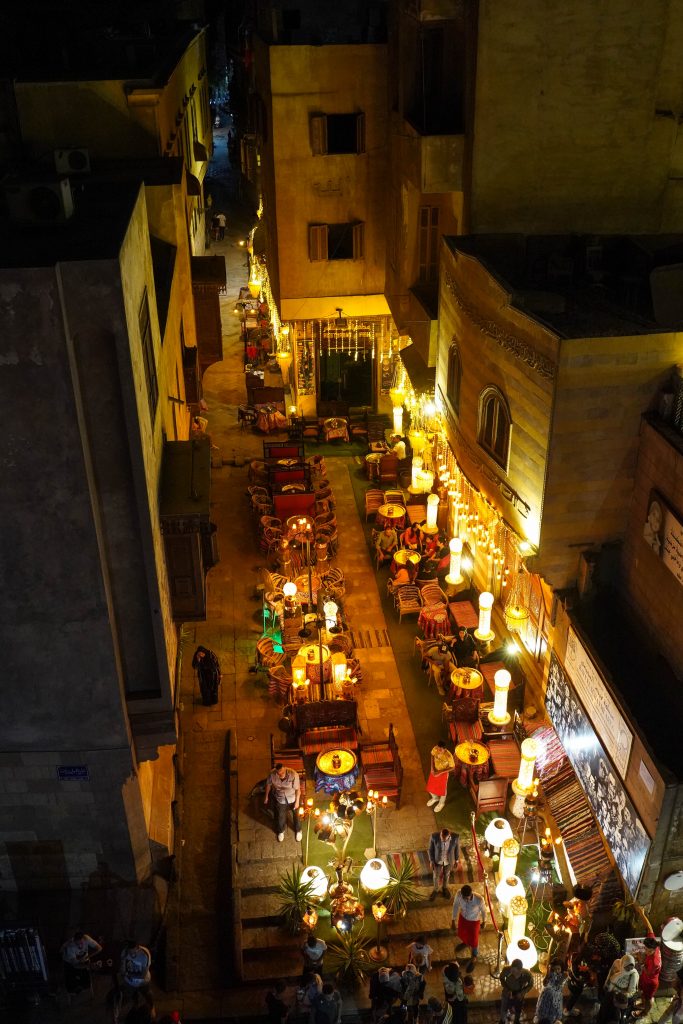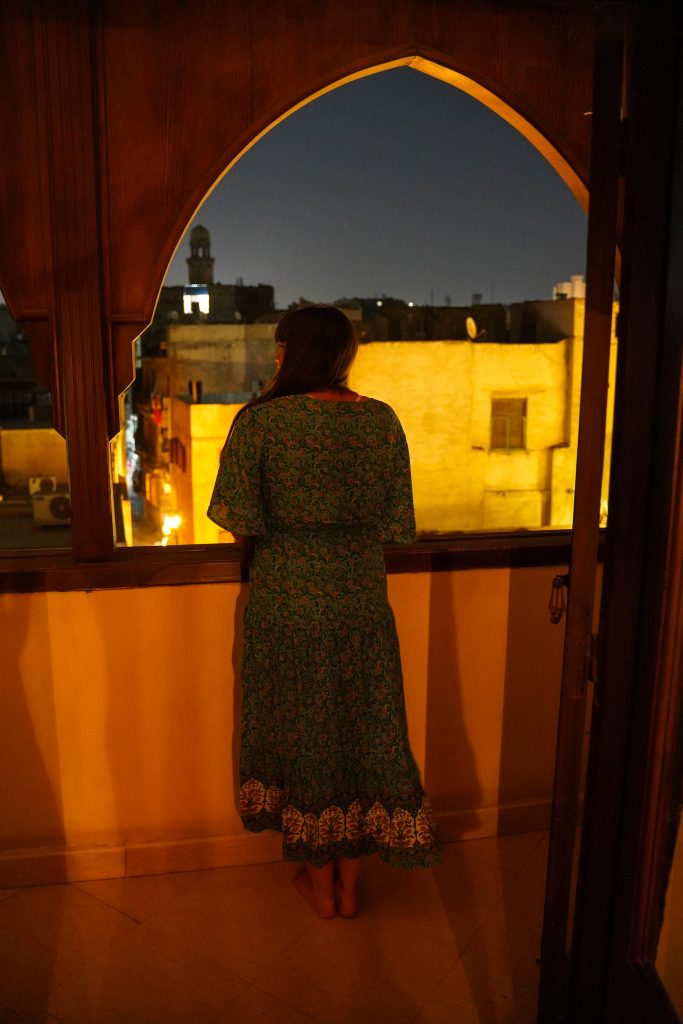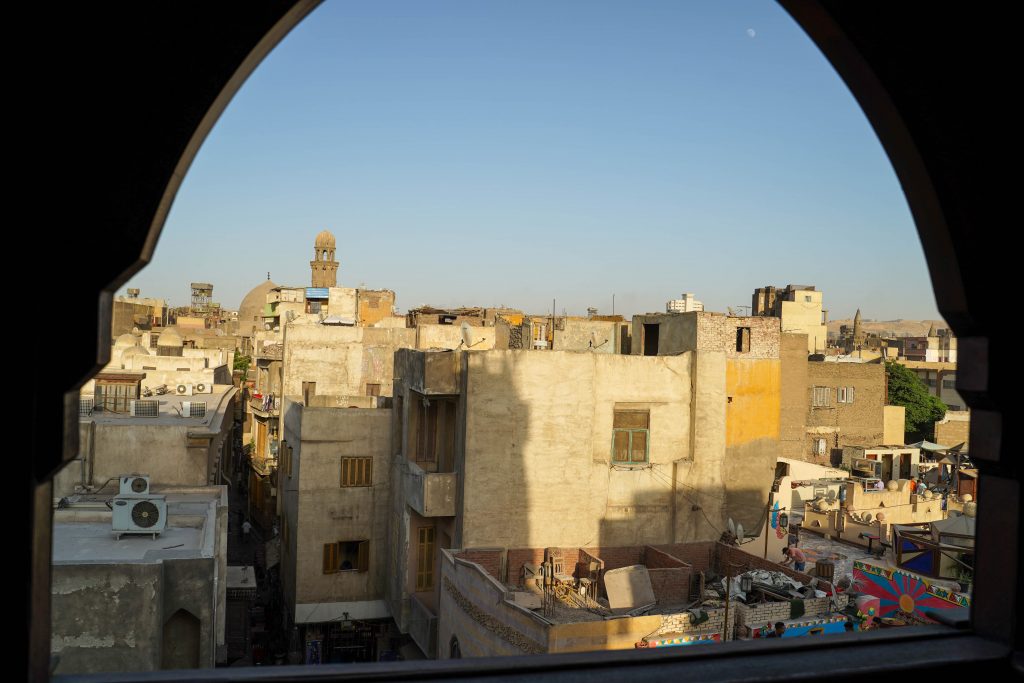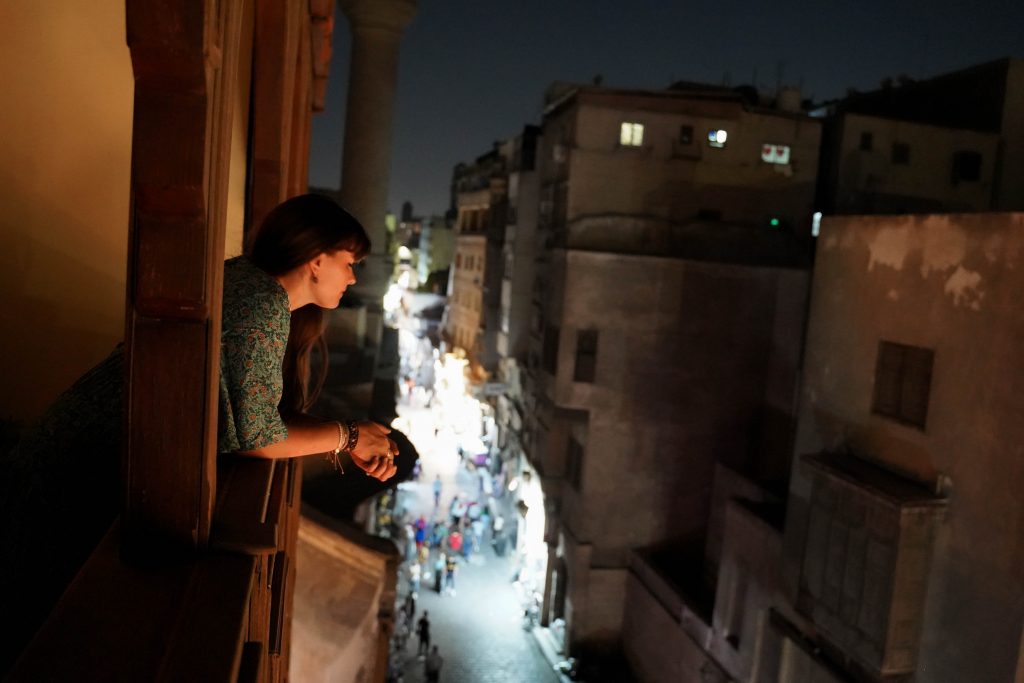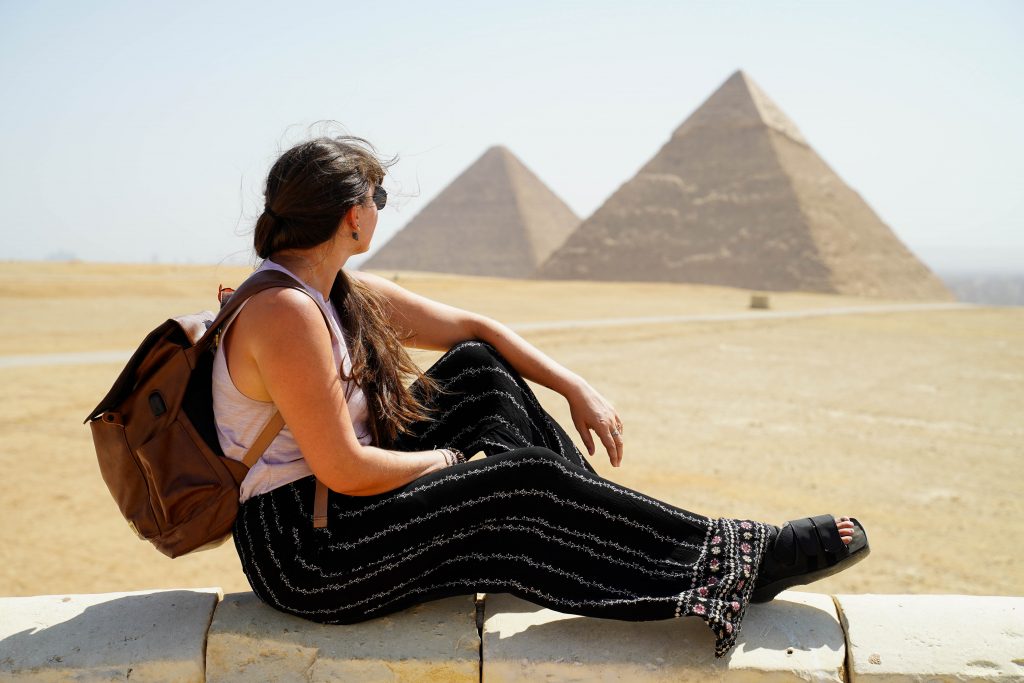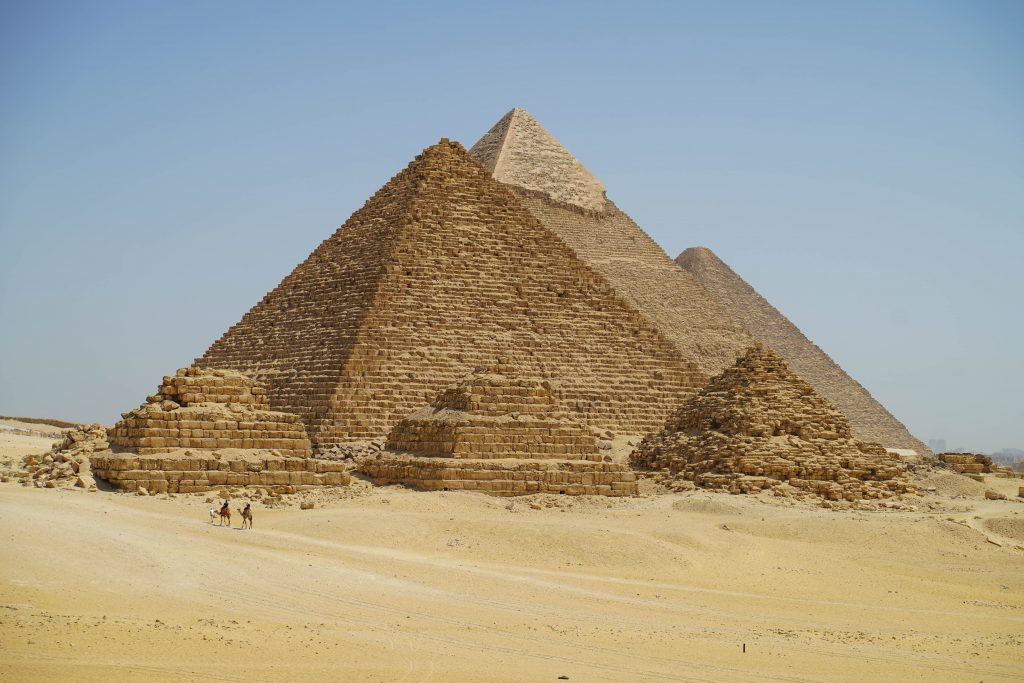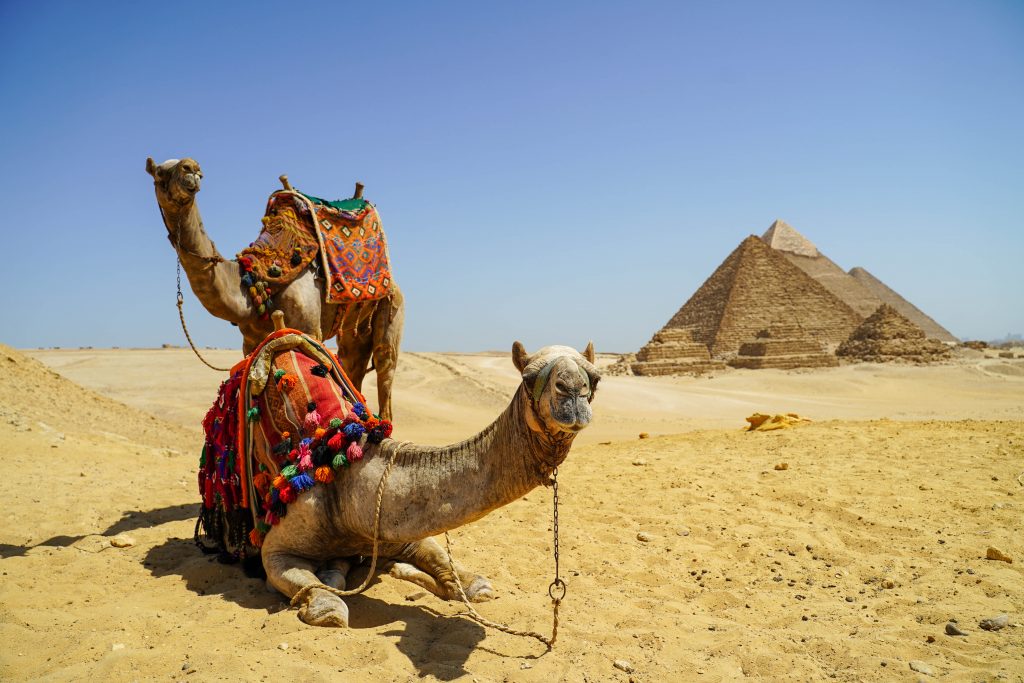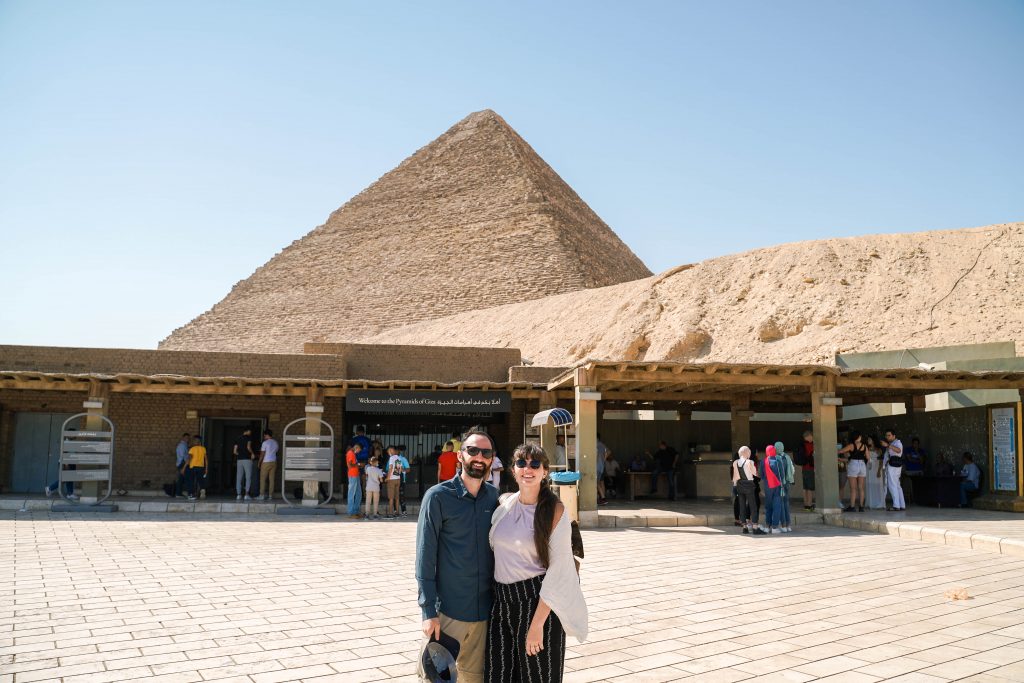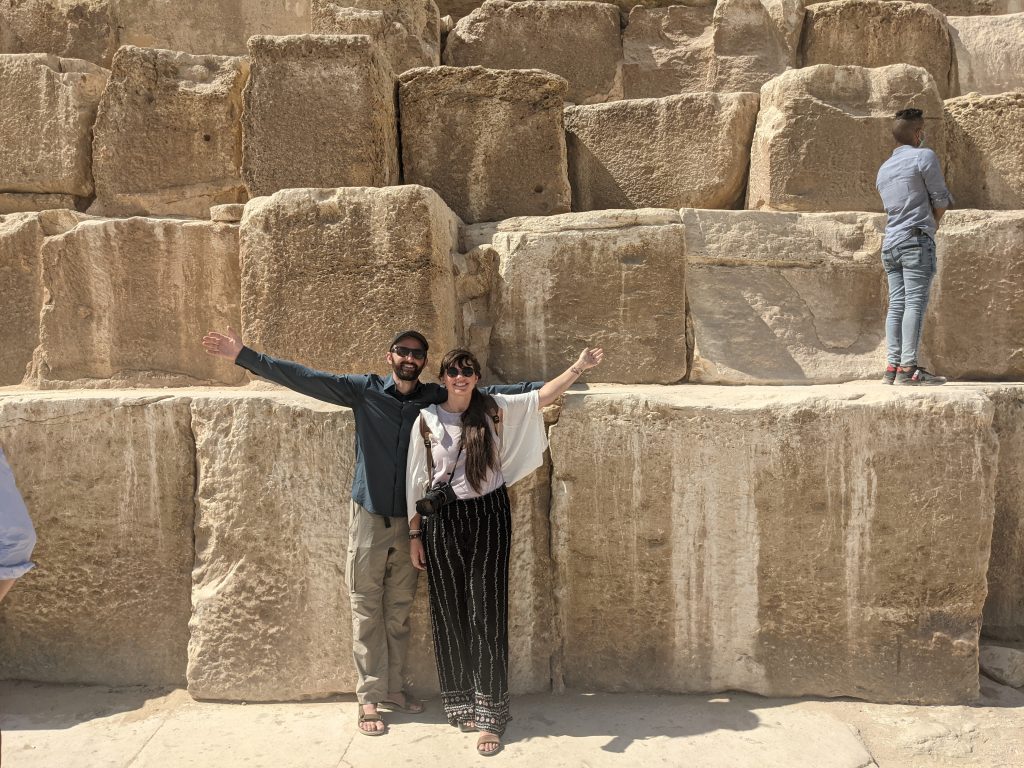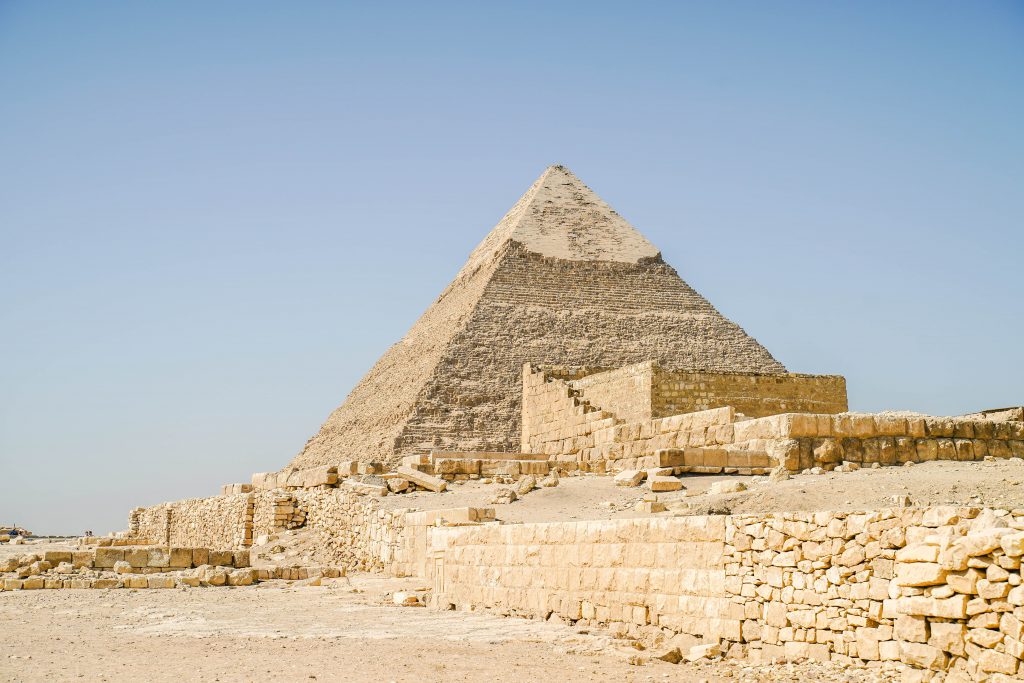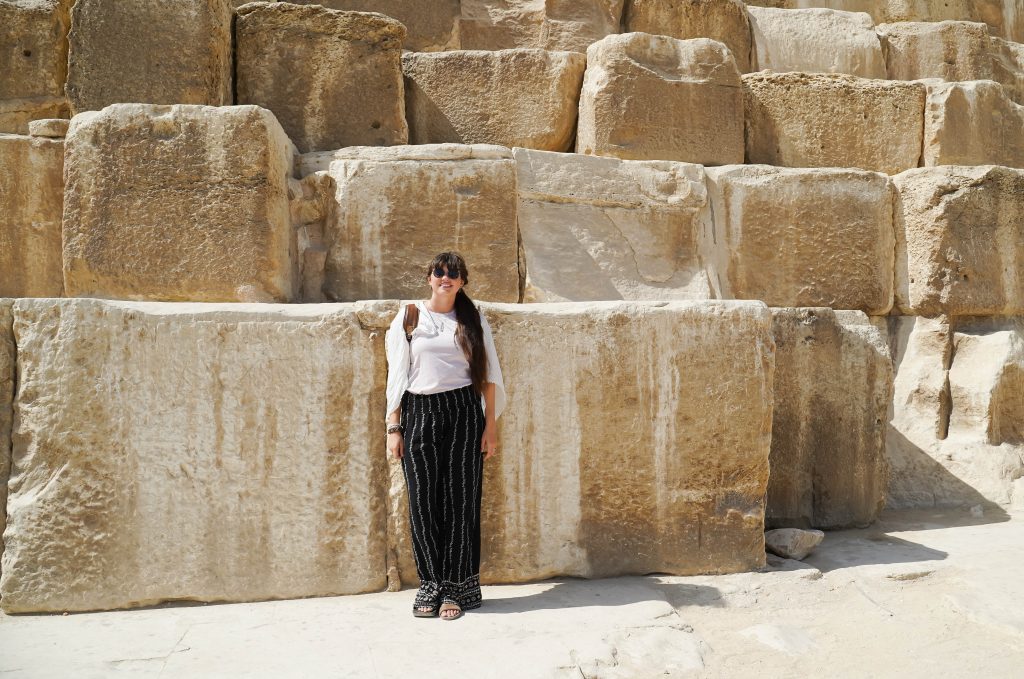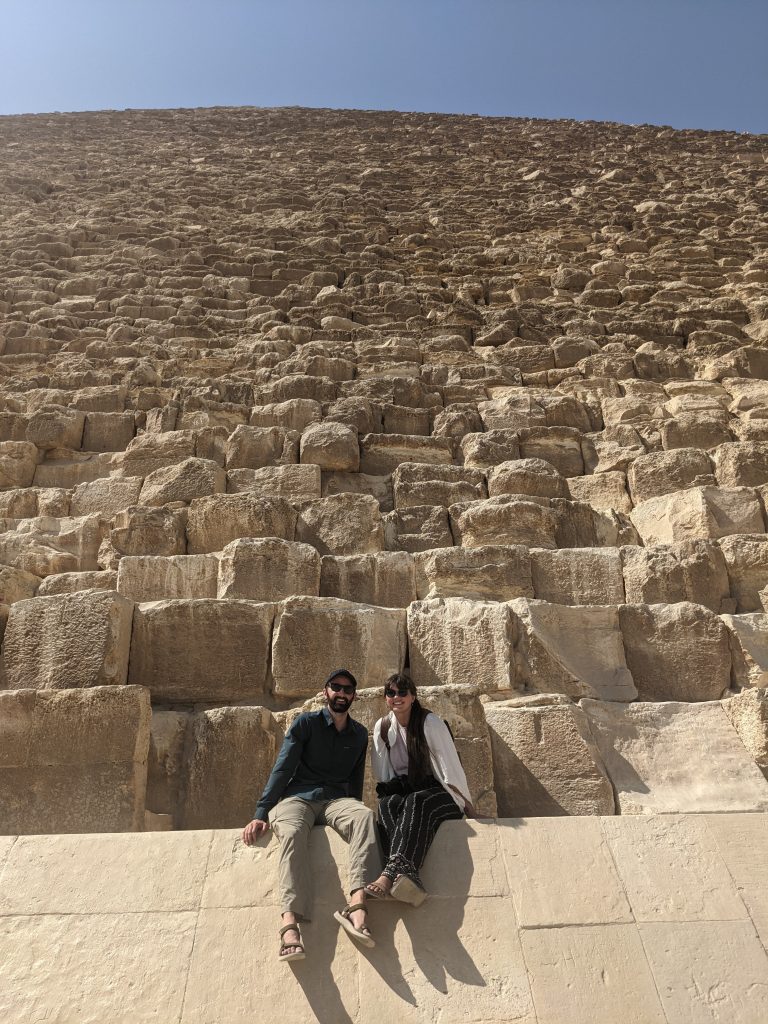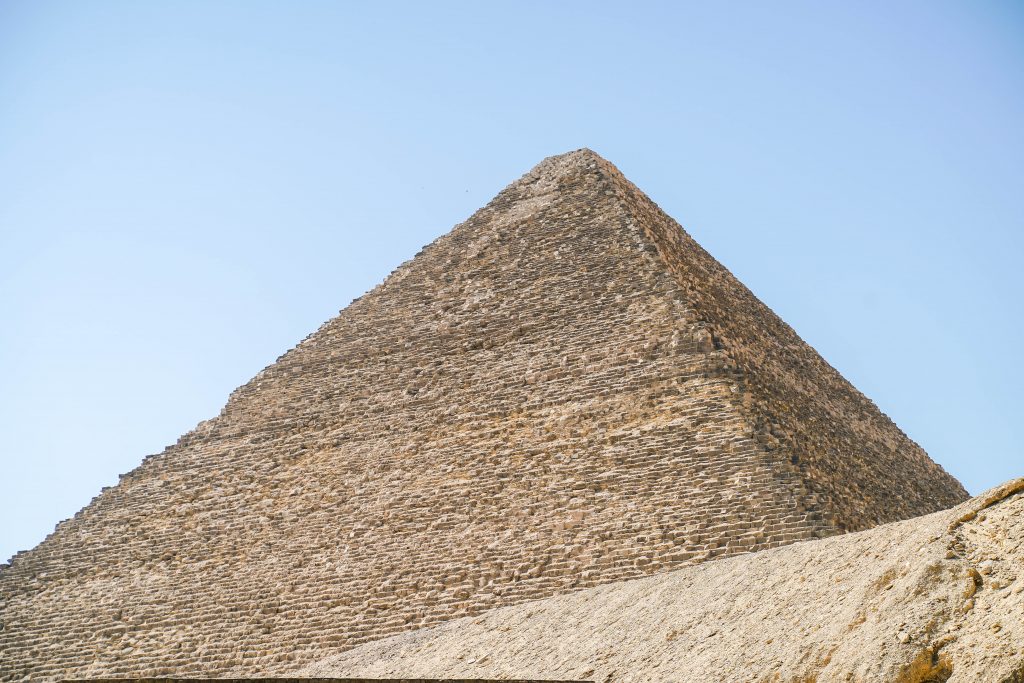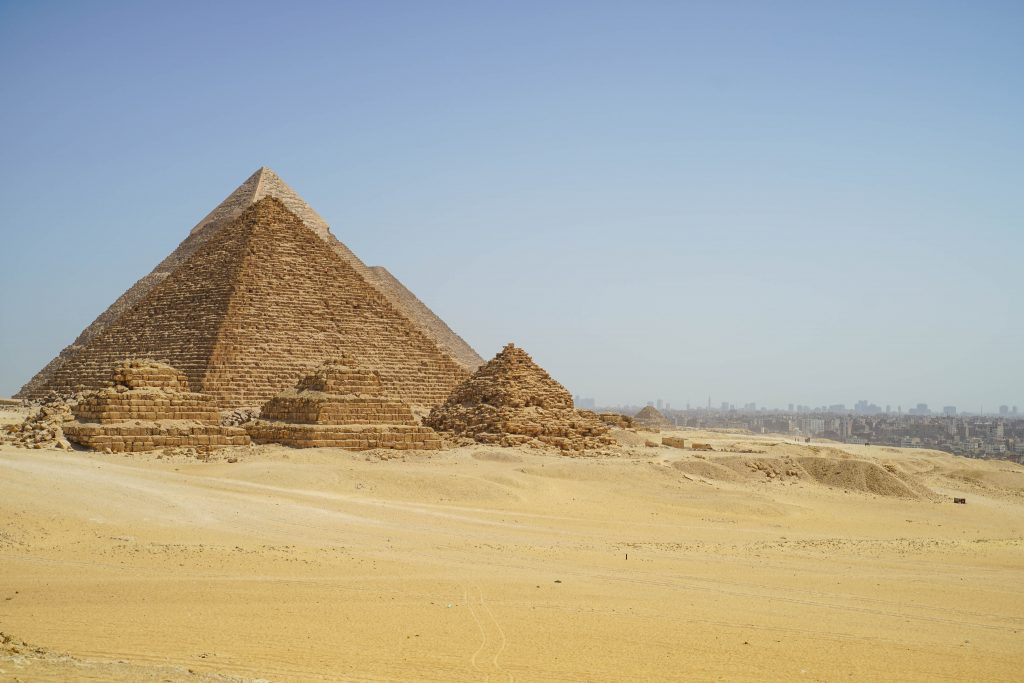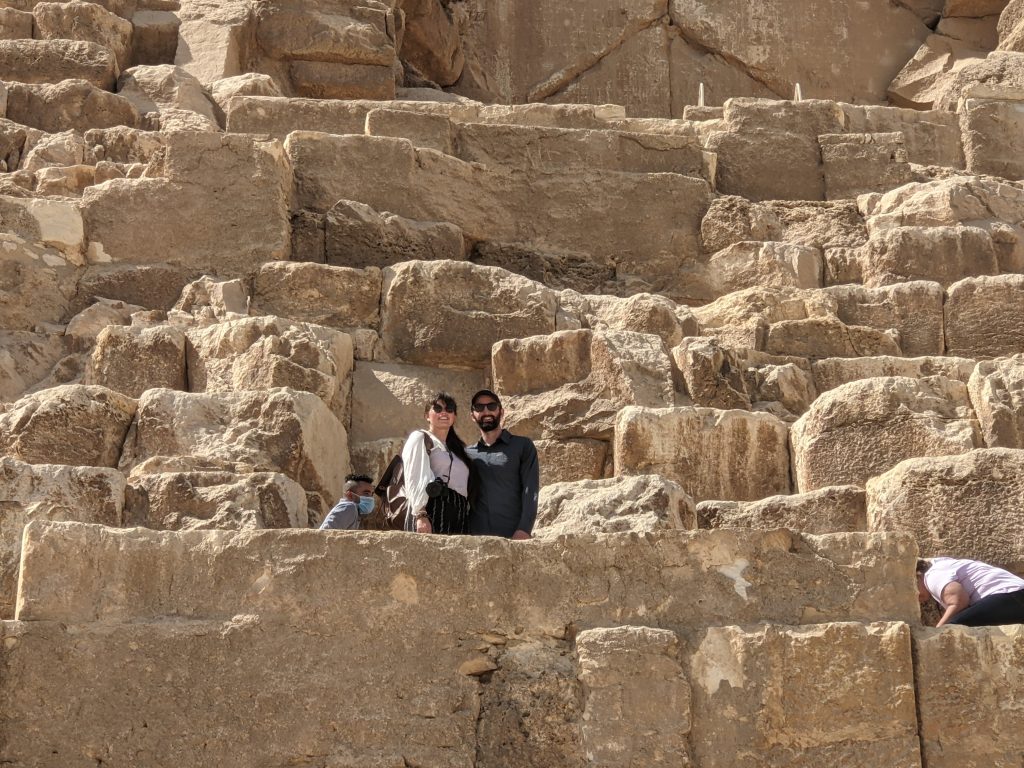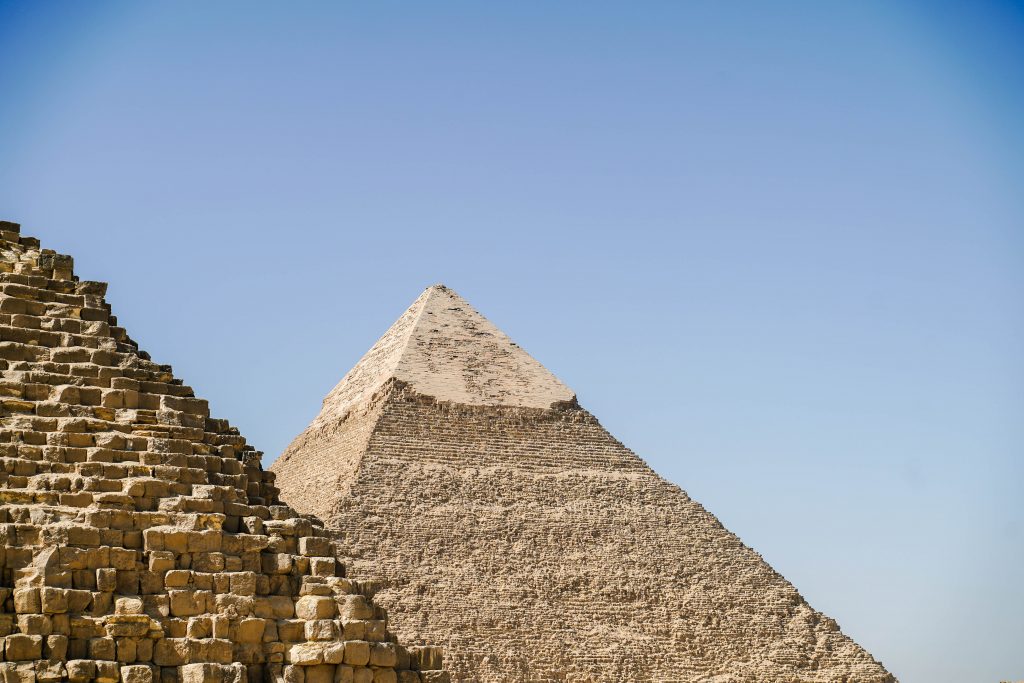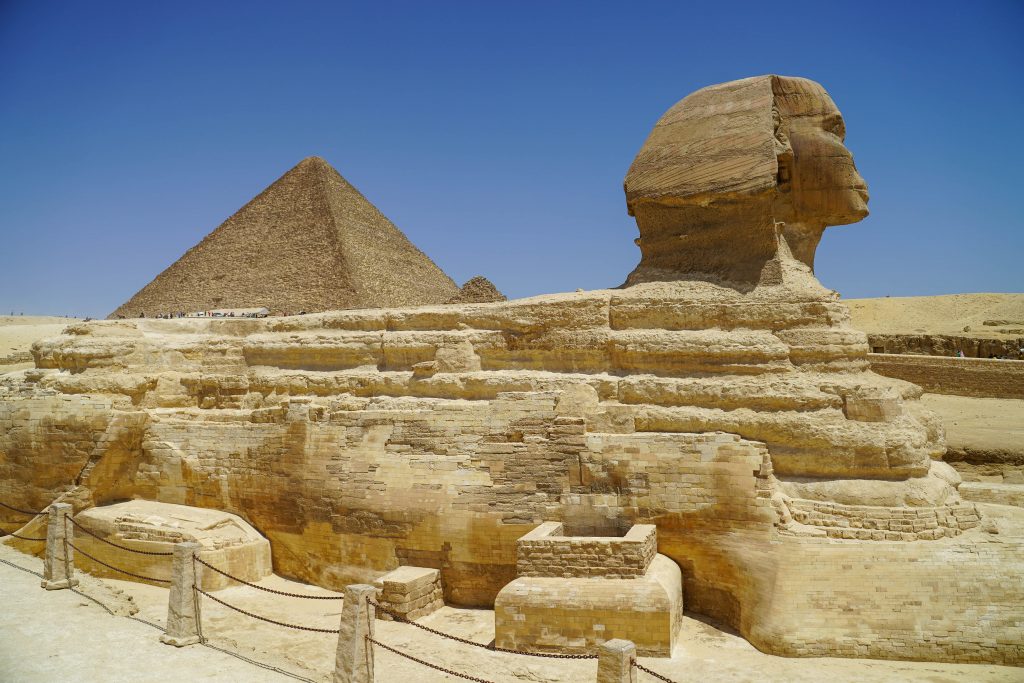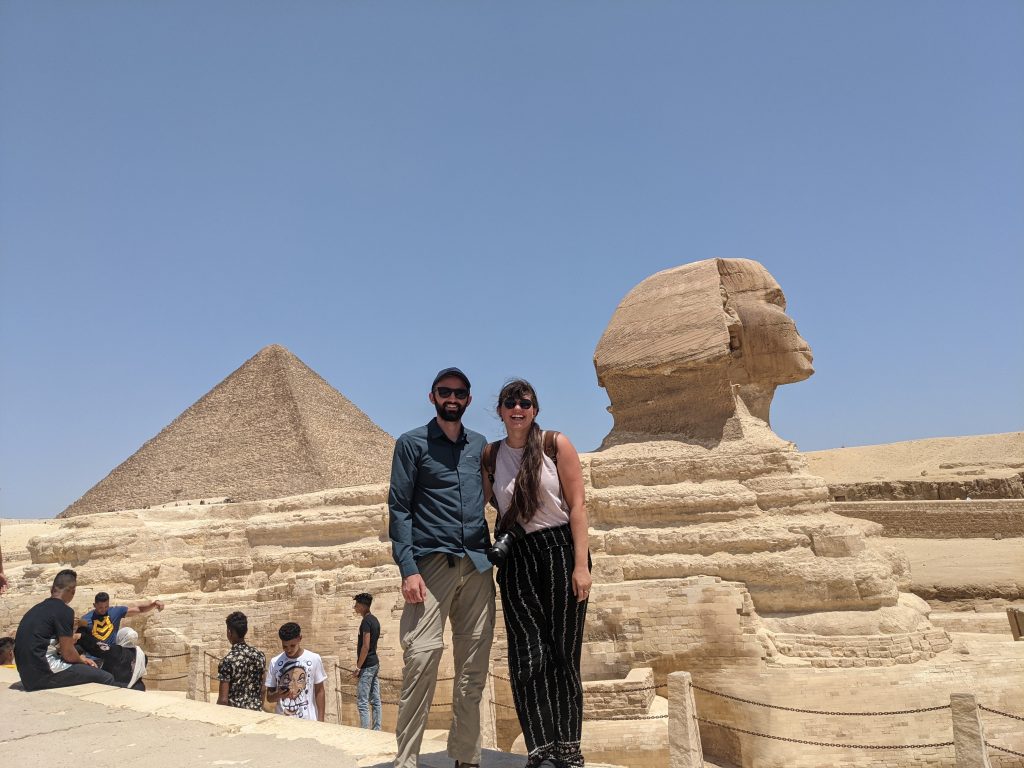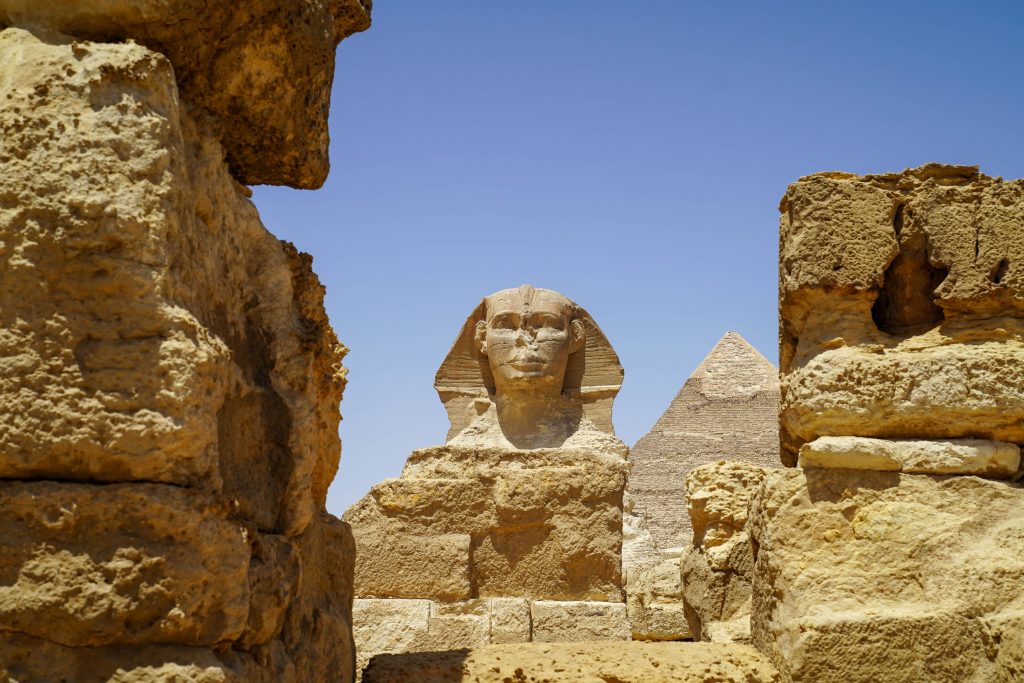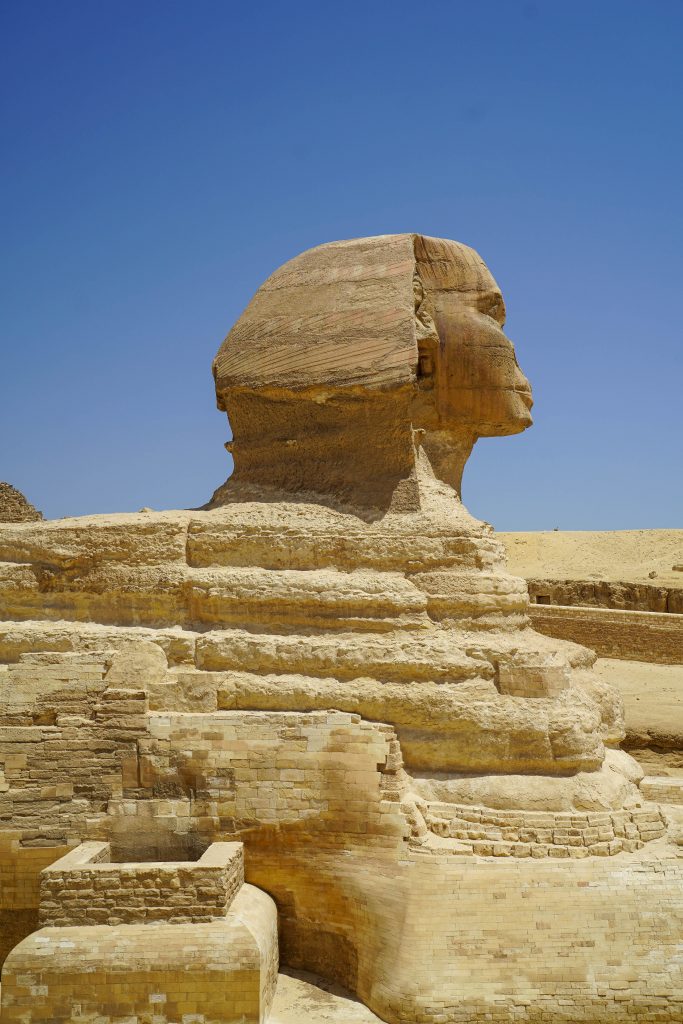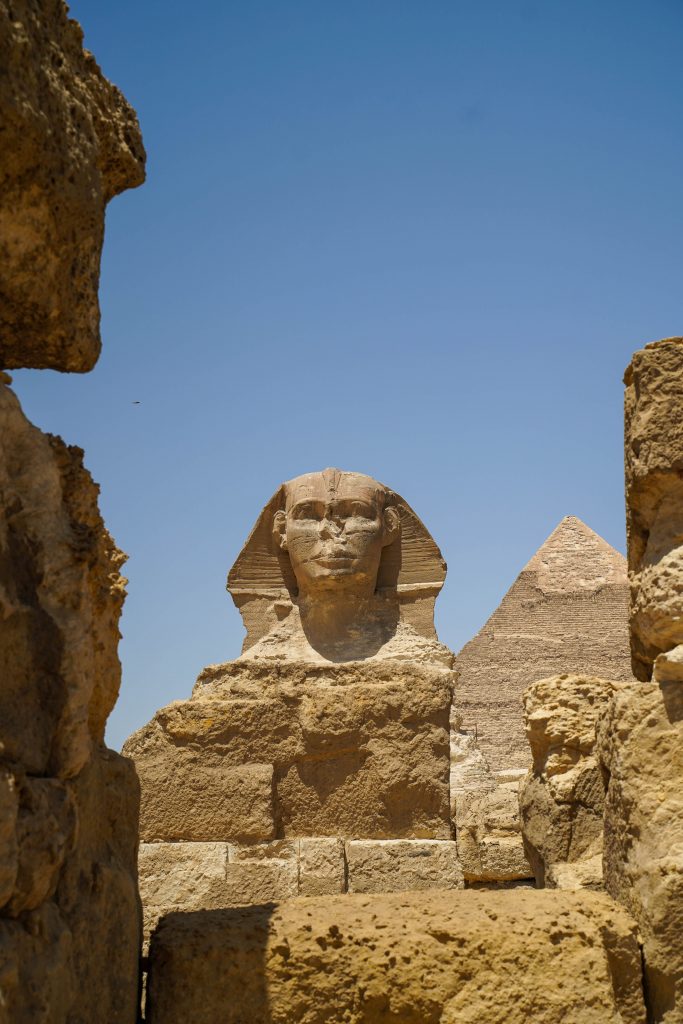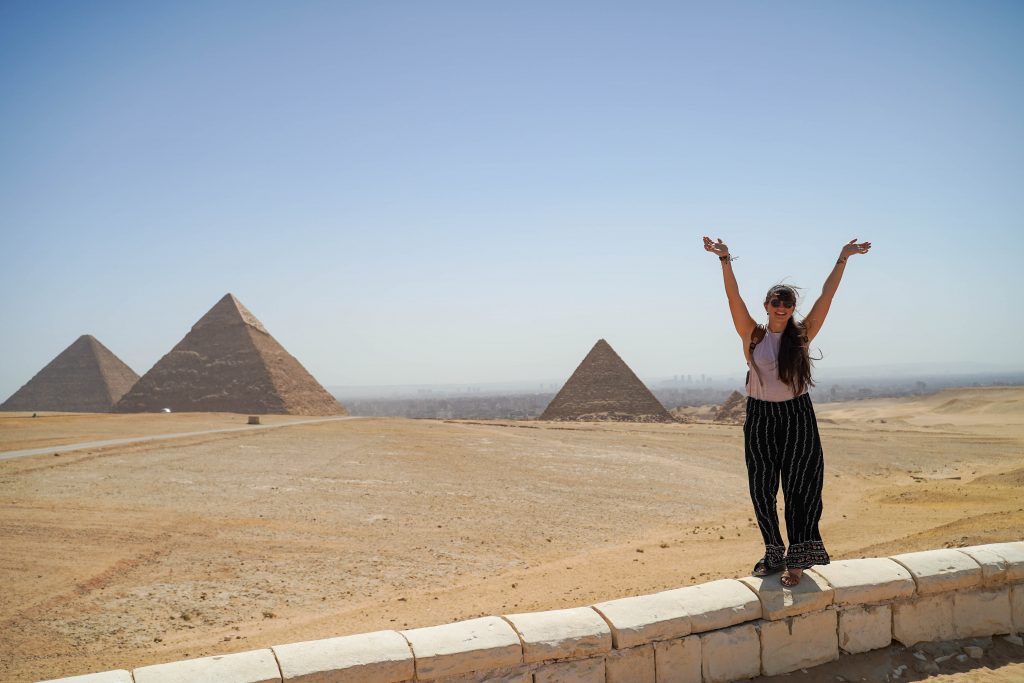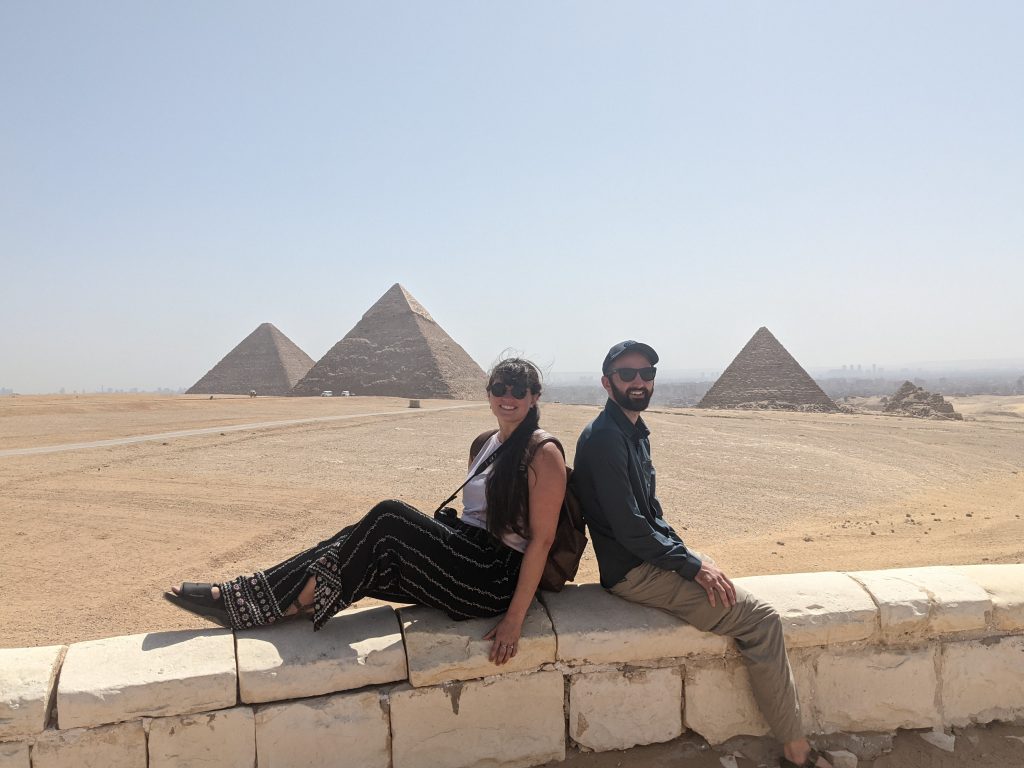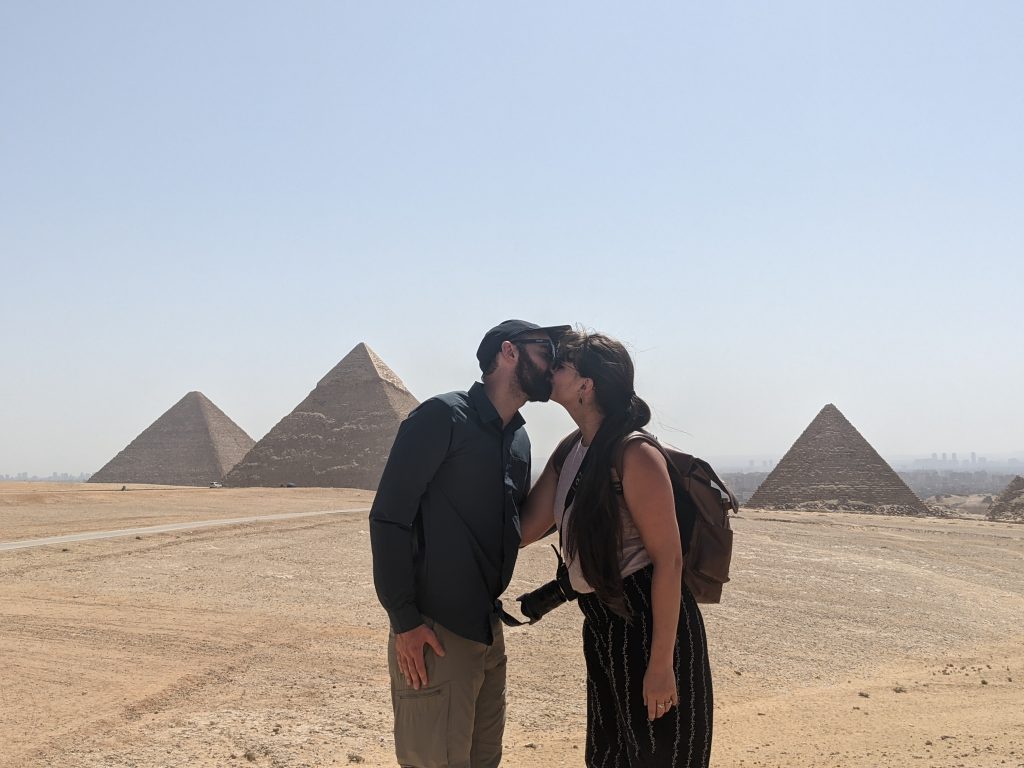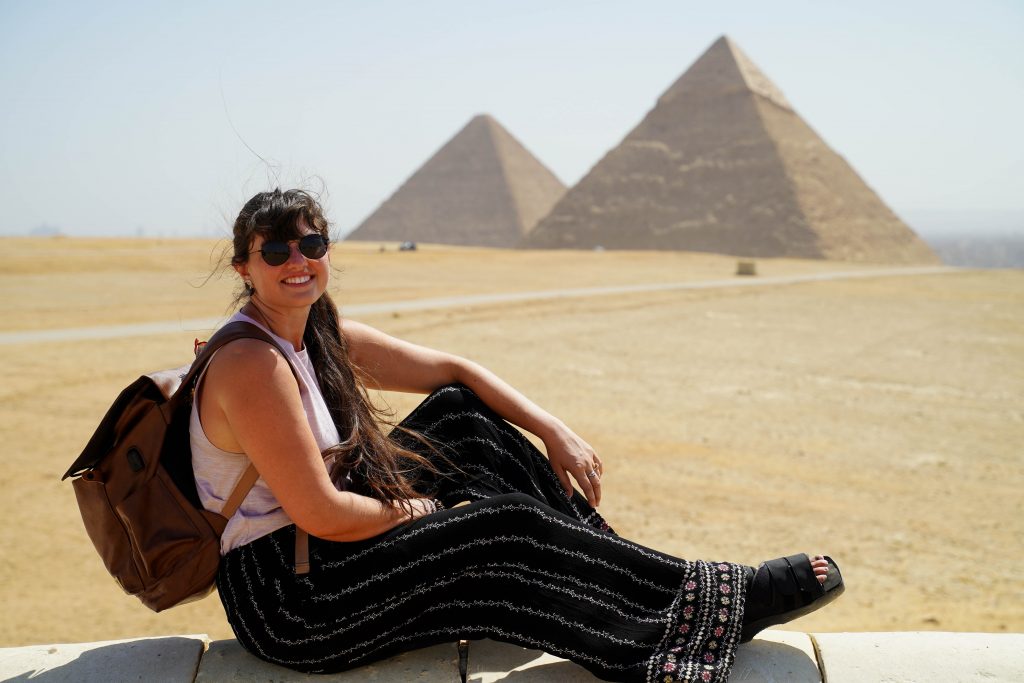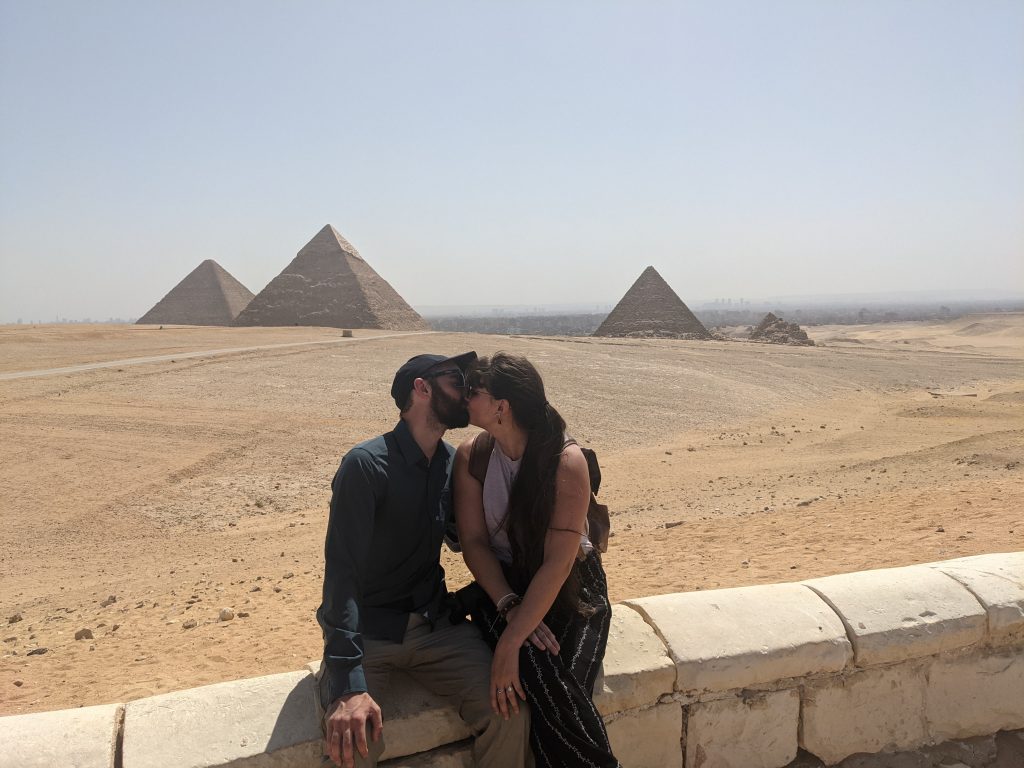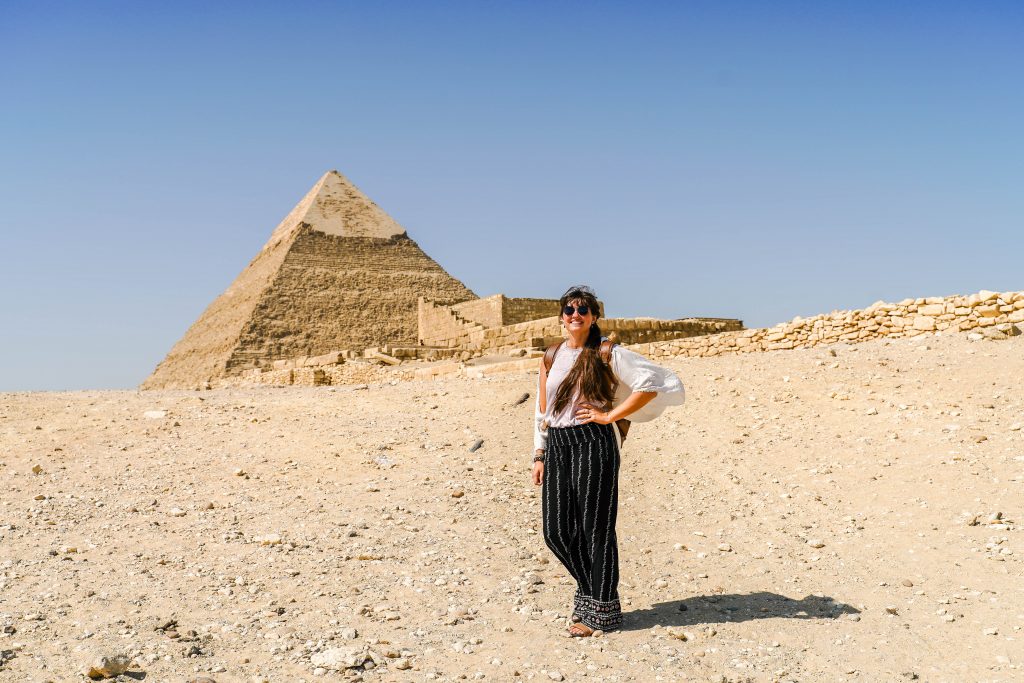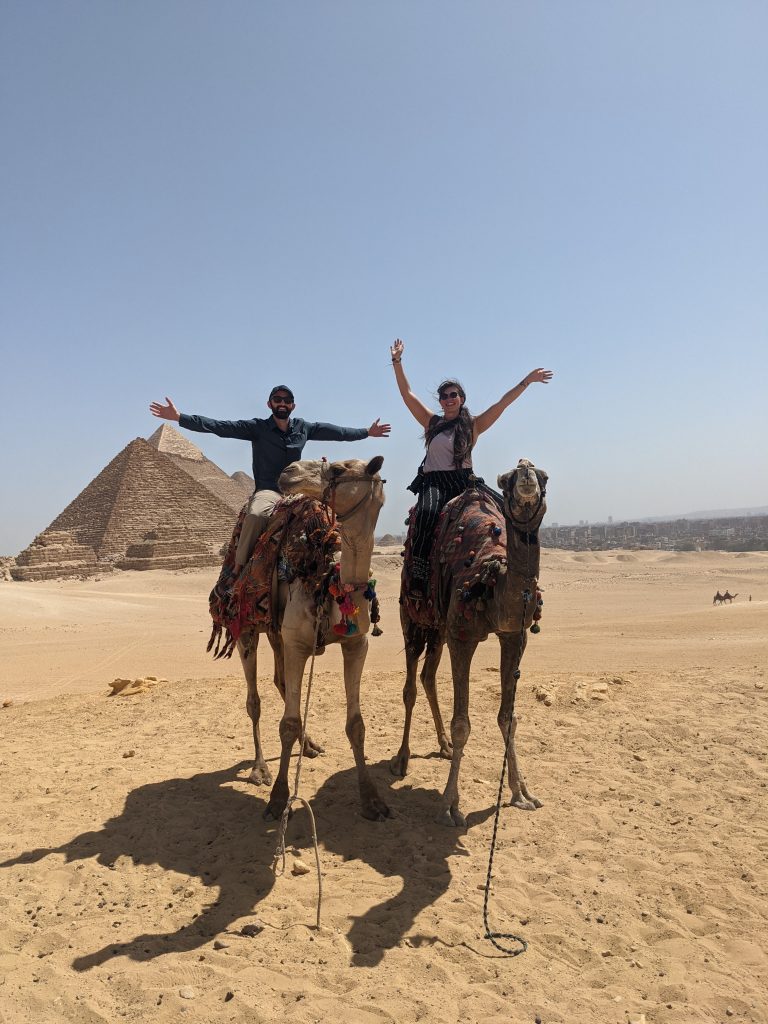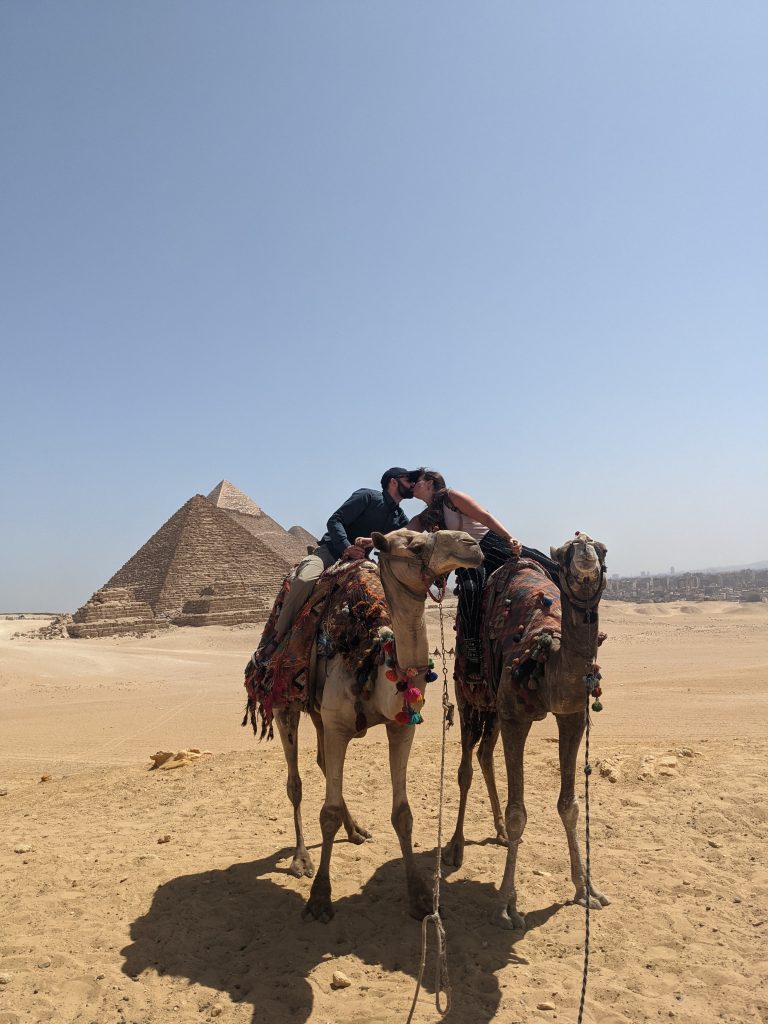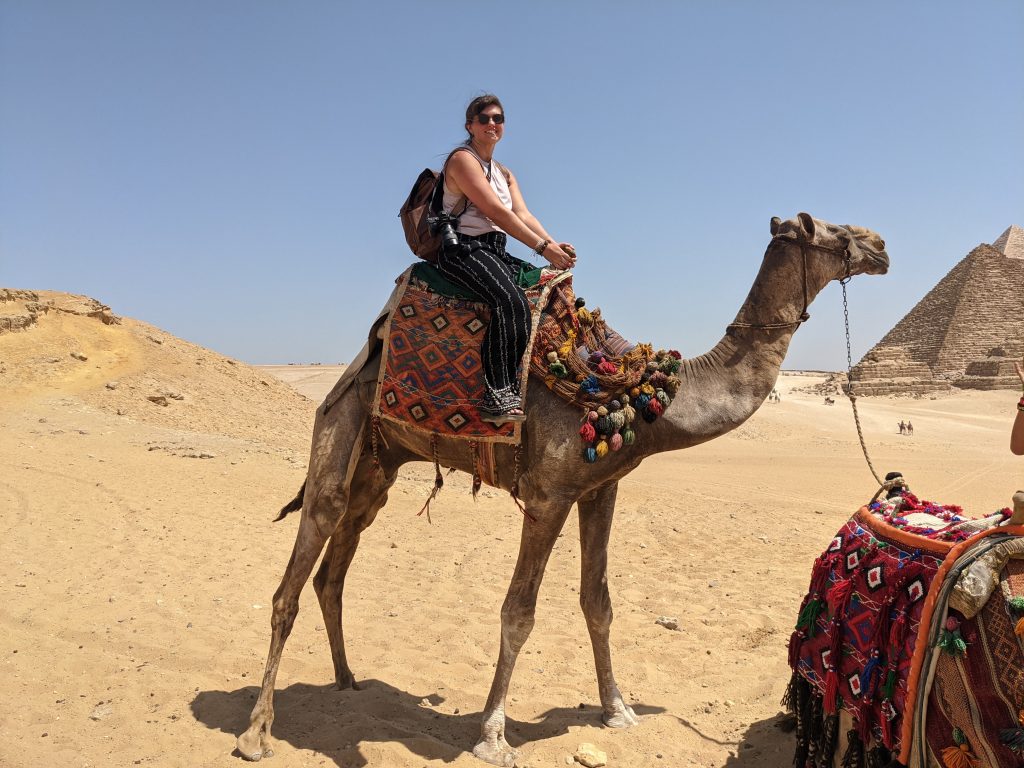Is it advisable to only spend one day in Cairo? Probably not. Sometimes you gotta do what you gotta do.
Cairo is an incredibly diverse and historic city. One minute you’re driving through neon light shopping centers, and the next you’re passing old Islamic cemeteries with no street lights but some signs of inhabitants. Then you turn a corner and you’re driving by incomplete sky scrapers where people are living, and don’t get me started on heading across the Nile to Giza where the pyramids magically appear out of nowhere.
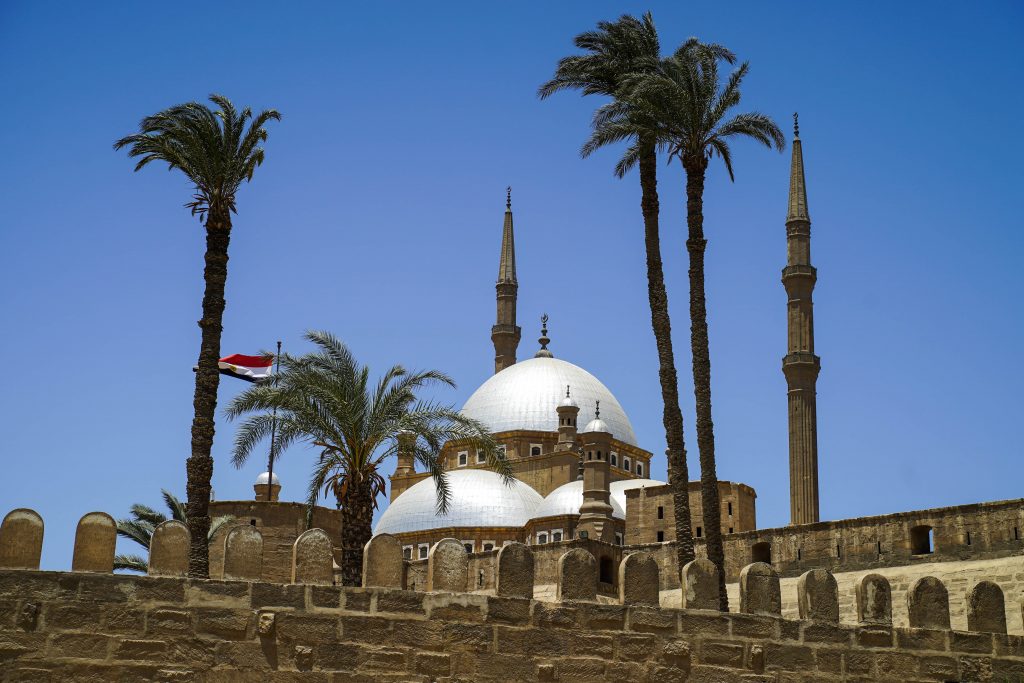
There is SO much to see in Cairo and the best way to do it is undoubtedly with a guide. A guide will be able to combine all these city elements into a relatable story that all travelers can understand- they can melt the history into current day culture, giving you a real appreciation for life as it was and now is in this grand city. We toured Cairo with Memphis Tours as part of our larger Egypt tour and our guide in Cairo was out favorite. (Don’t get me wrong though, our Nile cruise guide was also amazing)
As we were supposed to have 2 days in Cairo but missed a day to travel mishaps at the beginning of our trip, we appreciated the flexibility of Memphis Tours to give us the highlights all in one day! So if you’re looking for the abbreviated version of what should probably be 2-3 days in Cairo, you’ve come to the right place.
Post Contents
- History of Cairo
- A day in Cairo – Must Sees
- The Pyramids of Giza
- The Egyptian Museum
- The Citadel and Mosque of Muhammad Ali
- Where to stay in Cairo
A brief look at the history of Cairo
The old Egyptian capitol of Memphis
Cairo and the surrounding area played instrumental roles in the old Kingdom of Egypt, with the capitol Memphis being founded around the third century BC. The Memphis ruins are situated just south of the Giza pyramids and are definitely worth a stop (If you have more than one day that is) For the ancient Egyptians, the strategic position of Memphis just up river of the Nile Delta, allowed the region to thrive with commerce, trade, and religion. At the beginning of the middle kingdom of ancient Egypt, the capital and king’s court had moved to Thebes (up river on the Nile) so Memphis/ Cairo became a little less important until….
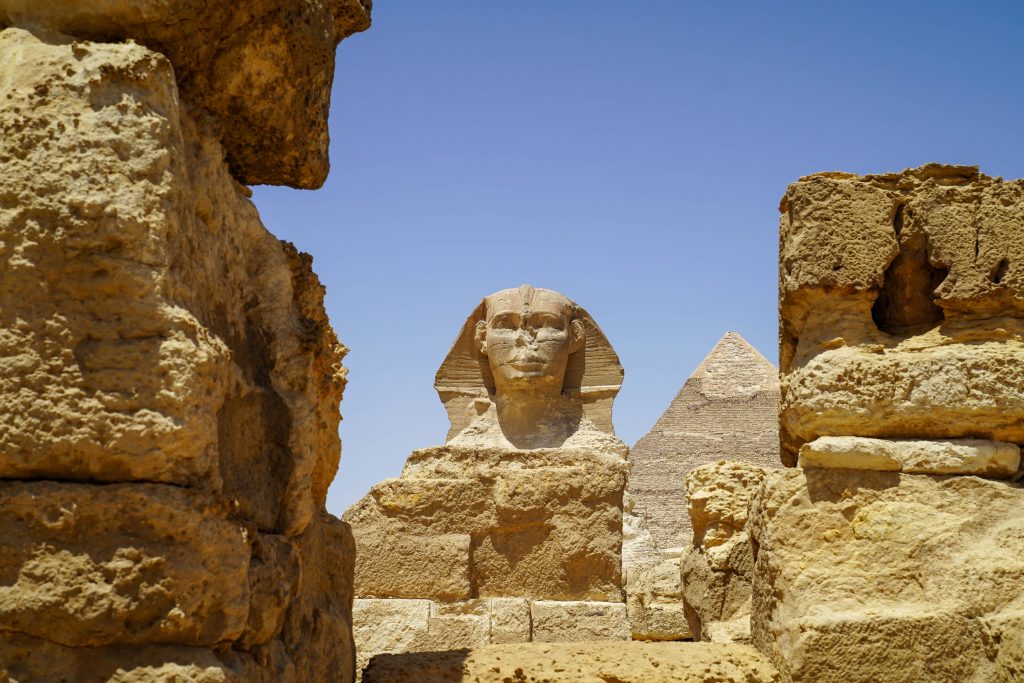
Coptic Cairo
Around the 4th century AD the origins of the modern city of Cairo developed with the building of settlements and the fortress Babylon. This “city” was an extension of the Roman and then Byzantine Empire with some building remains still in use today. The religion of the time was “Coptic” Christianity which equates to Orthodox- established by Saint Mark during the middle of the 1st century AD.
I won’t go into too much detail here but if you’ve read my other posts/ looked at photos you’ll know that Coptic Christianity played quite the role throughout the rest of Egypt as well as there is lots of evidence of temples being dismantled for churches or being turned into churches themselves. Apart from religion, the city played a large role in trade of the spice route at the time which furthered its influence worldwide.
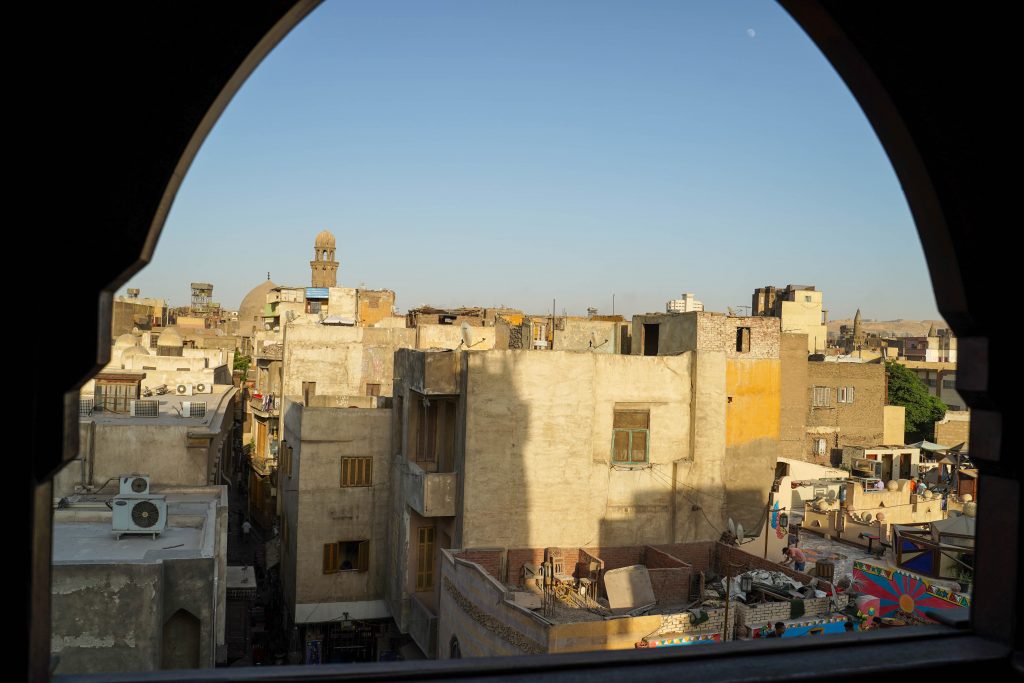
Muslim rule
Cairo officially came under Muslim rule around 640 AD after being conquered by the rulers Amr ibn As. The city passed many hands for years being overthrown by different Muslim rulers but the religion and culture remained the same. The seat of government changed locations throughout the city however resulting in the construction (and then demolishing) of several forts and settlements.
In 1169, the first Sultan of Egypt, Saladin was appointed by the Fatimids dynasty. During his reign the the Cairo Citadel was constructed (more on that below). The city through these centuries remained an important city along the spice trade route making the city influential on a global scale (and also making it fall to the same global issues that plagued Europe… namely the Black Plague.)
Ottoman rule
The last major period of time pre modern history is with Ottoman rule. The city’s status as a global capitol of import was diminished in the late 1400s due to a sea route around the Cape of Good Hope allowing spice traders to avoid Cairo. The decline of the city still continued when the Ottoman empire supplanted power in Egypt in 1517 diminishing it from a country in its own right to a province. The city did still prove useful in the transportation of coffee and Indian textiles with the rest of Africa and the Balkans. During the time the city also became an important place of learning with a large institutions of Islamic scholars taking up residence.
After the Ottomans began more of the modern history with first French and then British occupations. After failed occupations the country descended into civil wars until an Albanian named Muhammad Ali Pasha ascended to the role of commander and then Viceroy of Egypt.
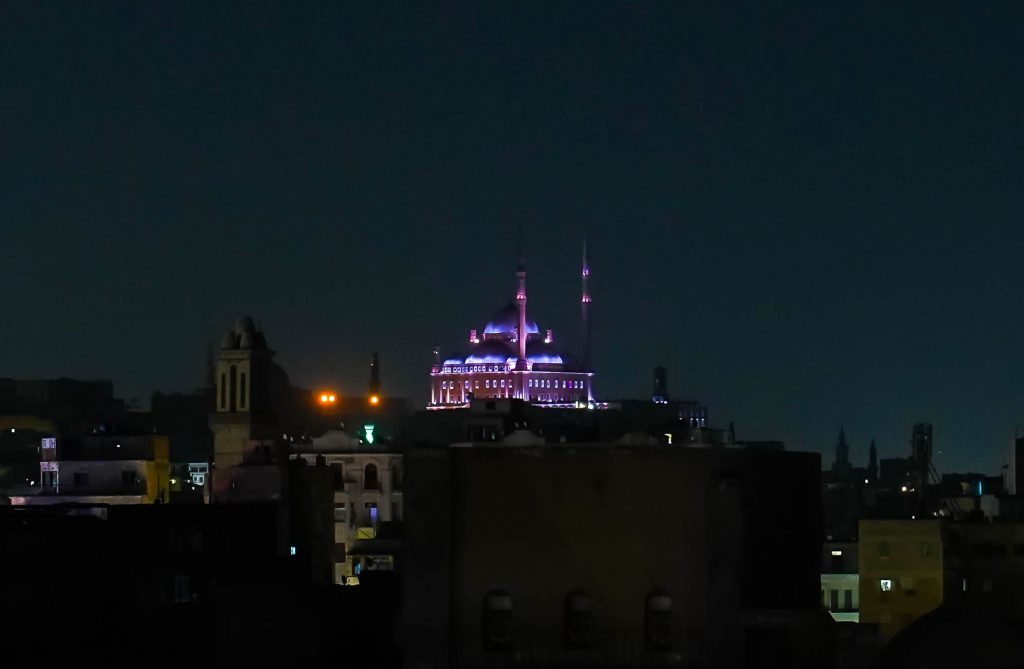
A day in Cairo – MUST SEE’S
The Great Pyramids of Giza
Not just a Cairo must see, but an Egypt must see if the obvious Great Pyramids in Giza. It’s one of the seven wonders of the Ancient World and one of the oldest monuments in the world still standing. (And that you can actually visit inside of!) The pyramids are iconic for good reason as they are incredible to see in person. They are surrounded by sand and yet also city.
Several photos show the pyramids with nothing around them but that is a matter of perspective as all around the modern world bustles. I have a couple posts dedicated to the pyramids so I won’t say more in this post but please visit here for a complete guide to visiting the pyramids and here if you’re curious about camel rides at the pyramids. I can’t say enough- this place has to be on your bucketlist.
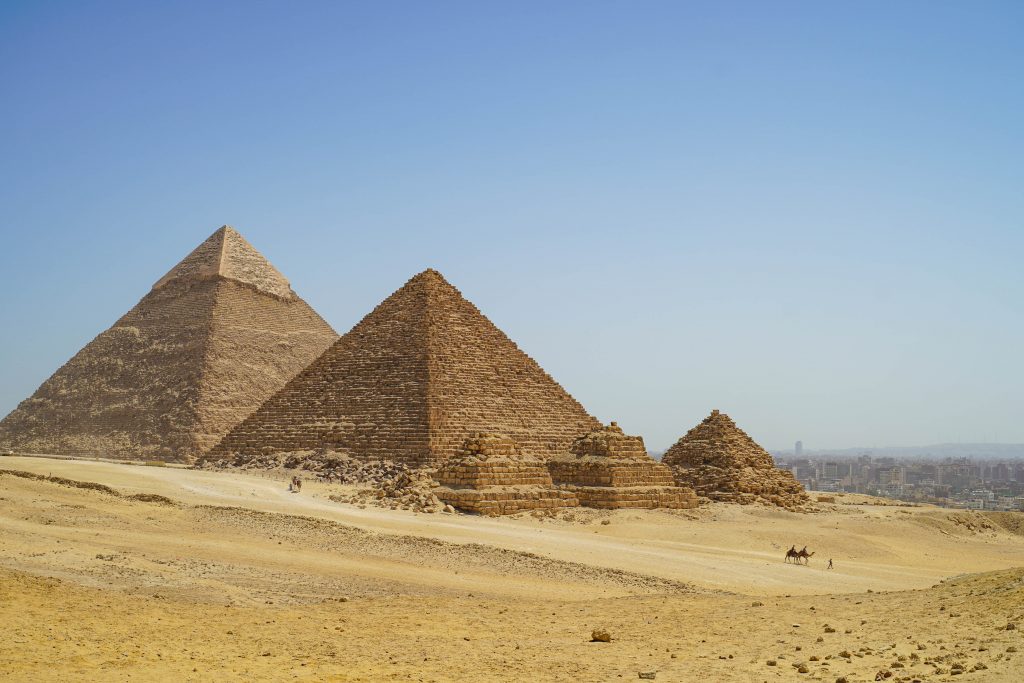
Time needed to visit the pyramids: 1.5-3 hours
* Visiting the pyramids will take around 1.5-3 hours depending on if you opt for a camel ride and/or to go inside the great pyramid, and how long you spend visiting the mortuary temples and surrounding sites.
The Egyptian museum (old or new)
Once the new museum is completed, it will be even easier to visit in one day with the pyramids as it is right next door. However we visited the old museum which was still a bit of a drive away. The museum is a MUST because everywhere you go in Egypt you will only be seeing the shell of what was- the ruins. You’ll see the walls, some statues, even fewer roofs, and loads of carvings- but what actually made these places magnificent was what was IN them.
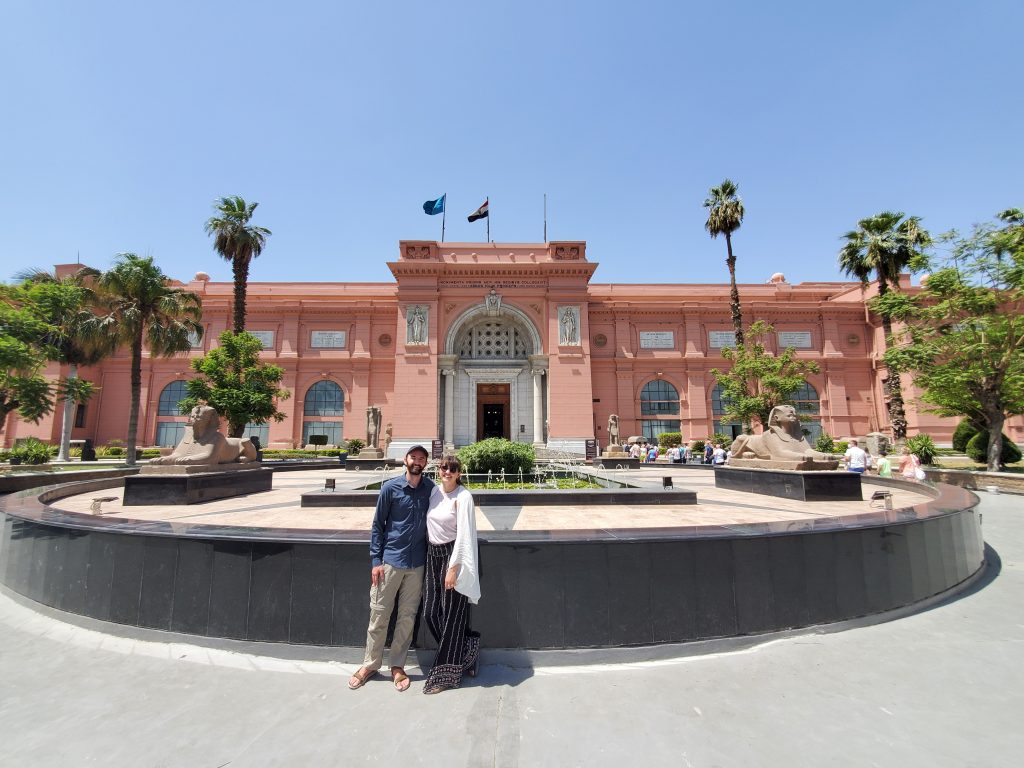
The museum holds all the treasures discovered in the tombs for Kings’ passages to the afterlife and statues that were moved from monuments for protection. Most powerful of all you will see the mummies that have been discovered and learn even more about the ancient leaders of Egypt and their beliefs.
Treasures in the museum
Apart from the mummies, one of the most notable things you’ll see in the Museum is King Tut’s collection. King Tut was a pharaoh who died in his teenage years but is famous for his tomb. His tomb was one of the more recent discoveries and was discovered IN TACT with all of its riches. Our favorite things were the ornate and GIANT boxes and his solid gold headdress.
*These are a small snippet of the incredible things you see in the museum. I did not take any photos of the mummies out of respect and most of King Tut’s gallery is off limits for photos.
Tips for visiting the museum:
- Plan your day in Cairo AFTER visiting the other sites in Egypt (notably the Valley of the Kings) so that you can base everything you learn in the museum on a foundation built up from seeing the locations these artifacts were discovered.
- If you are visiting in 2022 or later, you will likely be visiting the new museum. They are still moving things over so if you visit the old museum, know that there is no AC in the building so dress accordingly.
- The museum will involve HOURS of standing and walking on hard stone floors. Wear maybe the most comfortable pair of shoes you brought on your vacation for this day. Your body will thank you.
Time needed: Minimum of 2 hours (4 hours preferred)
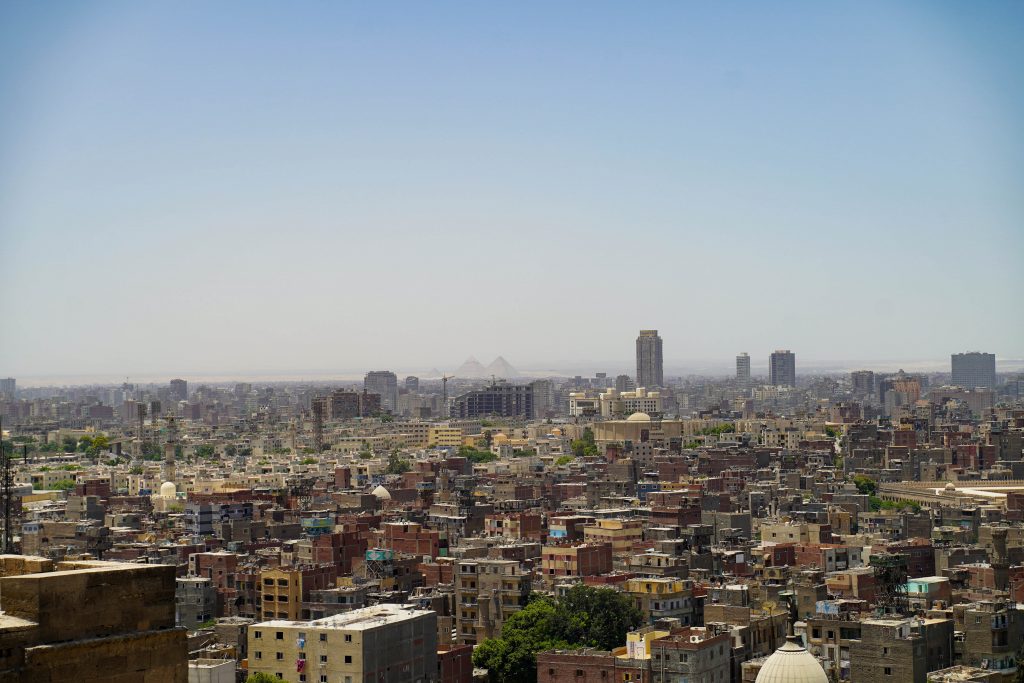
The Cairo Citadel
The citadel is a quick stop if you are visiting Coptic Cairo or the old Egyptian museum and is a great place to learn a bit more about the modern religion in Egypt as well as the more recent history. (more recent as in AD instead of BC) The view from the walls is panoramic and on clearer days you can see the pyramids rising out of the city haze in the distance. I particularly liked wandering the fortress and taking in the impressive walls but the key places to visit is the Mosque of Muhammad Ali which was built between 1828-1848.
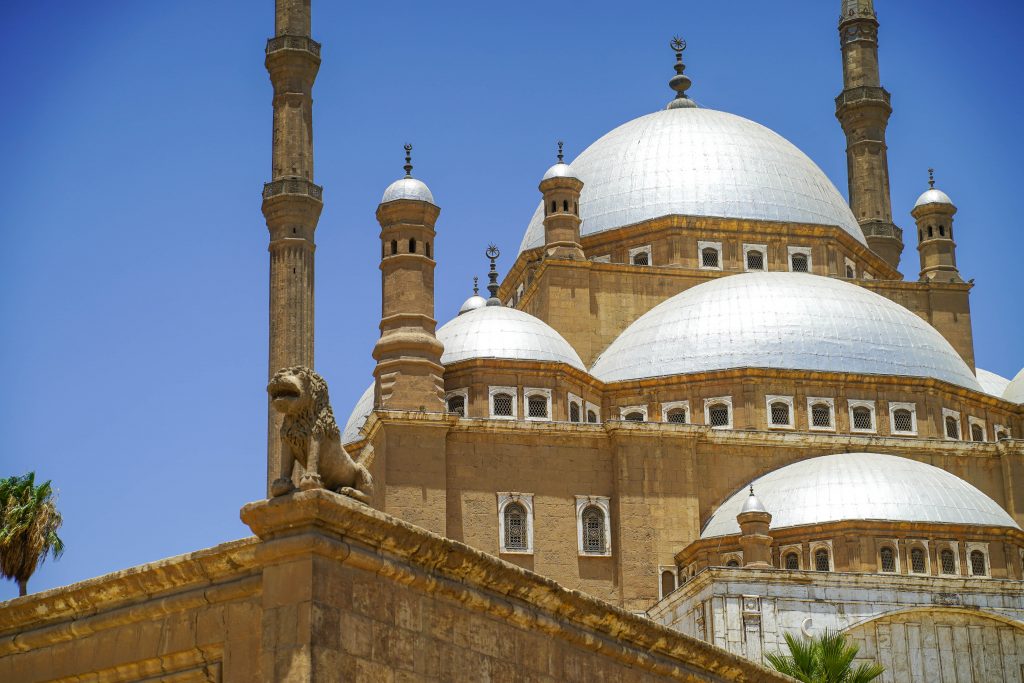
After taking in the view from the citadel’s walls, head towards the Mosque’s entrance. There’s an open courtyard you can take a peep into (we were not allowed to walk around but we could take a look) that displays a clock tower given to Muhammad Ali Pasha by Louis Philippe of France in 1845 AD. Muhammad Ali reciprocated the gesture with an obelisk of Ramesses II’s (c.1279–1213 BC) that stood in front of Luxor Temple. Today, it stands in the Place de la Concorde Square, Paris.
After admiring the clock tower head inside the mosque itself. You’ll need to slip your shoes off before entering and women will need to make sure they are covering their shoulders/ arms. (No need to cover your hair) The mosque features an impressive chandalier, wooden pulpit, and many other intricate carvings including the space surrounding Muhammad Ali’s Pasha’s final resting place.
We were lucky to be there during an afternoon prayer where the walls reverberated the sweet melodic sound all around. The building is mainly used for tourism now so there weren’t any active worshippers in the site but it was still beautiful to be there during a prayer time.
Time needed to visit the Citadel and Mosque: 1 hour
Where to stay in Cairo
Downtown Cairo:
Le Riad hotel: $200+: This hotel is in the old Islamic area of Cairo. It’s literally within the walled old fort and you can only drive in via special permit. (Keep this in mind if you hire a taxi- they may not be able to find/ access the hotel) Each room is massive and unique – it is considered a “boutique” hotel. The rooms come with a private balcony, sitting area, and are themed based on cultures, colors, etc. We were upgraded through our tour so that was nice for us!
The restaurant on the roof had the best food we had in all of Egypt (also the most expensive) and the room was amazing. There was a fair amount of noise at night which could be due to the festival of Eid… but if you’re a light sleeper, I’d avoid staying in downtown Cairo.
Near the airport:
Le Passage Hotel and casino $50+ : This is the closest hotel to the airport which makes it very convenient for flights. Reasonable rooms and pool as well. We didn’t stay here as we got the upgrade to the Le Riad instead but it looks nice.
Concorde El Salam $80+: We stayed at this hotel on our own during a long layover in Cairo. The shuttle was convenient and helpful. The hotel is absolutely beautiful (and glamorous… we felt very underdressed in the lobby) and overall very comfortable. We had to leave early in the morning for our flight back to Germany but we were SO glad we booked this hotel instead of trying to pass a 10 hour overnight in the Cairo airport. (My least favorite place in the world at this point)
Near the pyramids:
Steigenberger Pyramids Golf Hotel $50+ – Luxury hotel feel on a budget wallet. The hotel has a pool with pyramid views. Some rooms have pyramid views and others have views of the new museum. Once the new museum is complete, this hotel is across the street in an unbeatable location. We stayed here and sadly only had like 6 hours in the hotel due to late flight in, and early flight out. We didn’t get to enjoy the pool but our room was very comfortable and the breakfast box the hotel provided for our flight was the BEST of our entire trip.
Other hotels of note:
Hayat $30+ Budget friendly and still within walking distance of the pyramids
Marriot Mena house – $200+ – Walking distance to the pyramids, very safe, and VERY nice. Easily the best pool.
